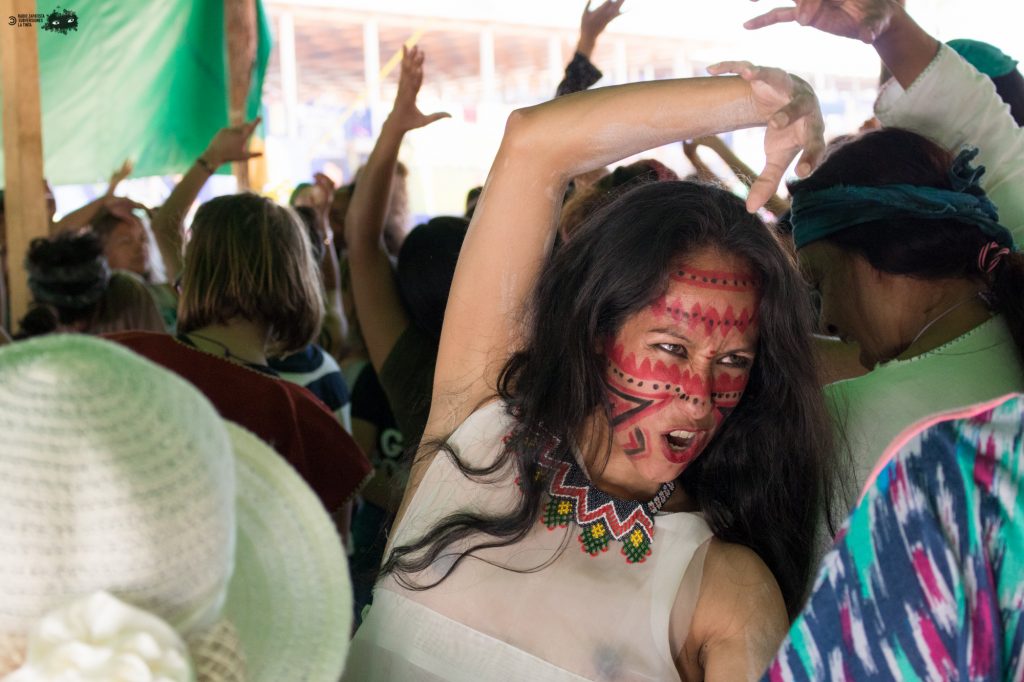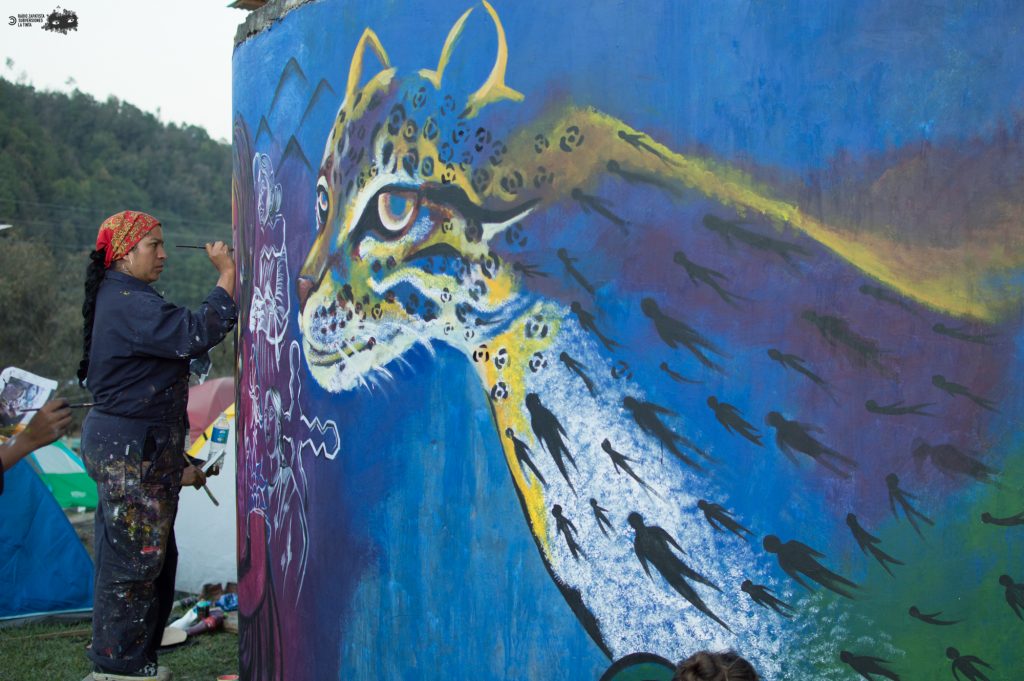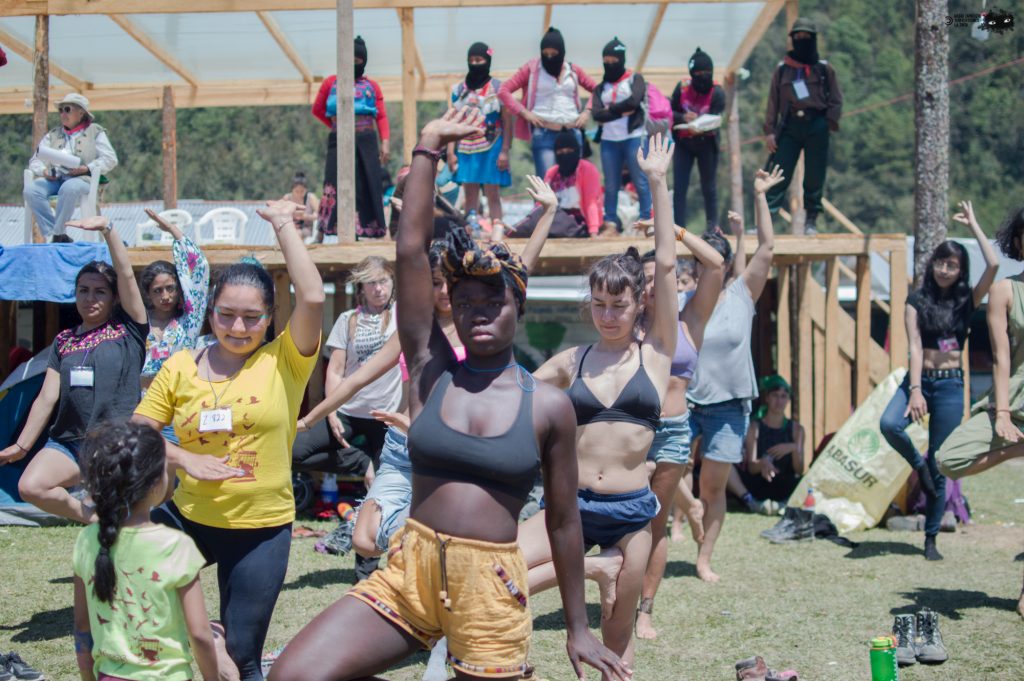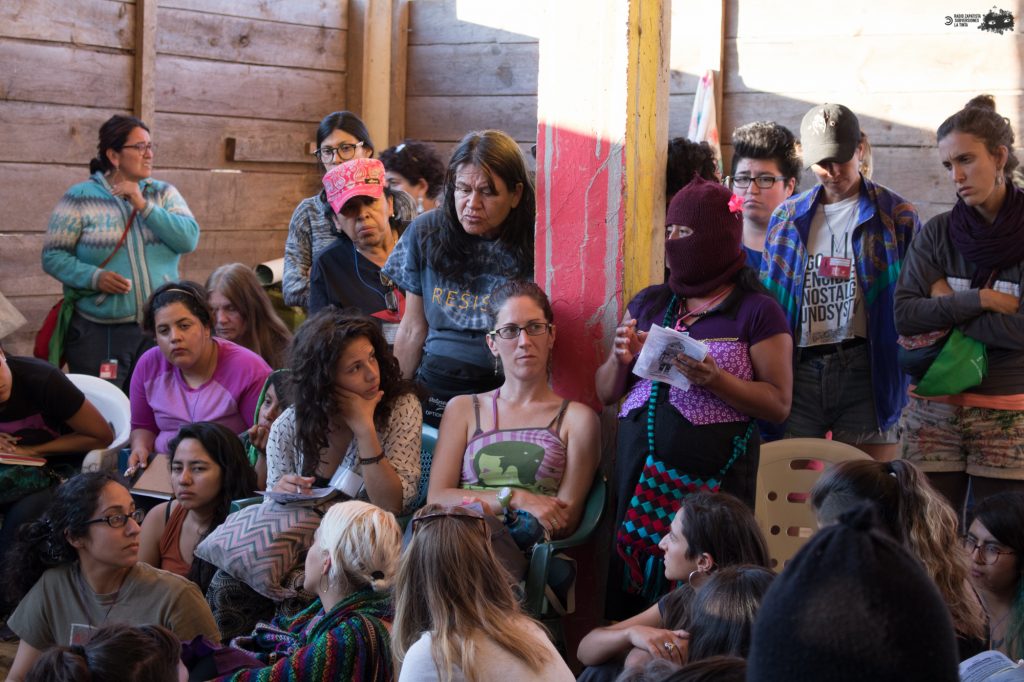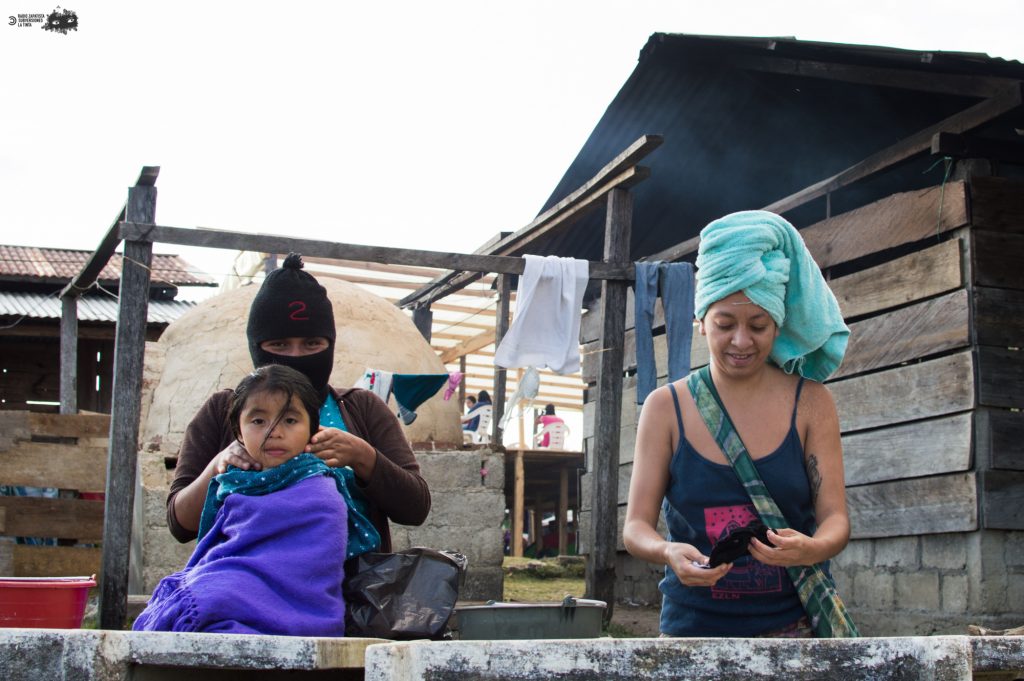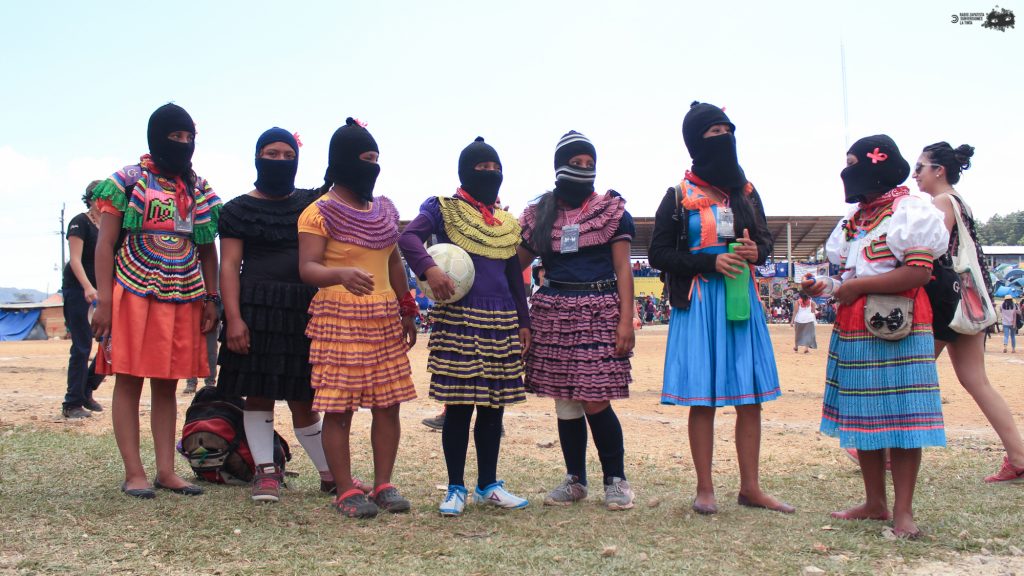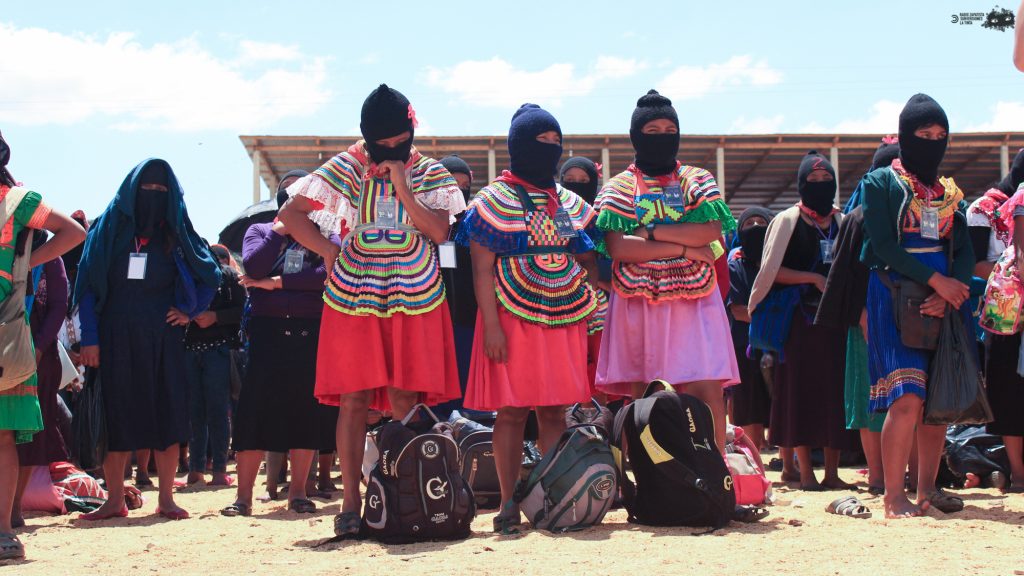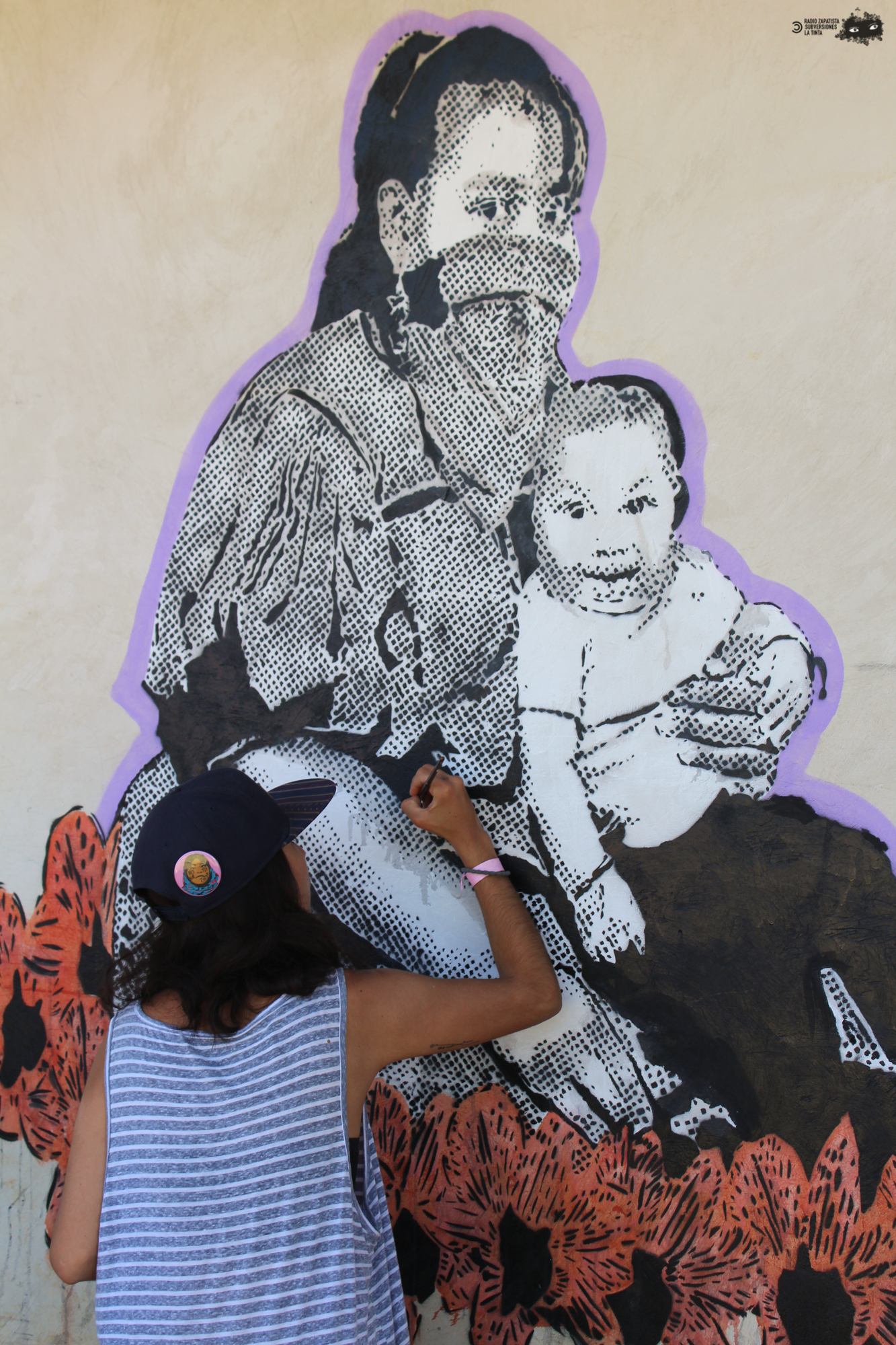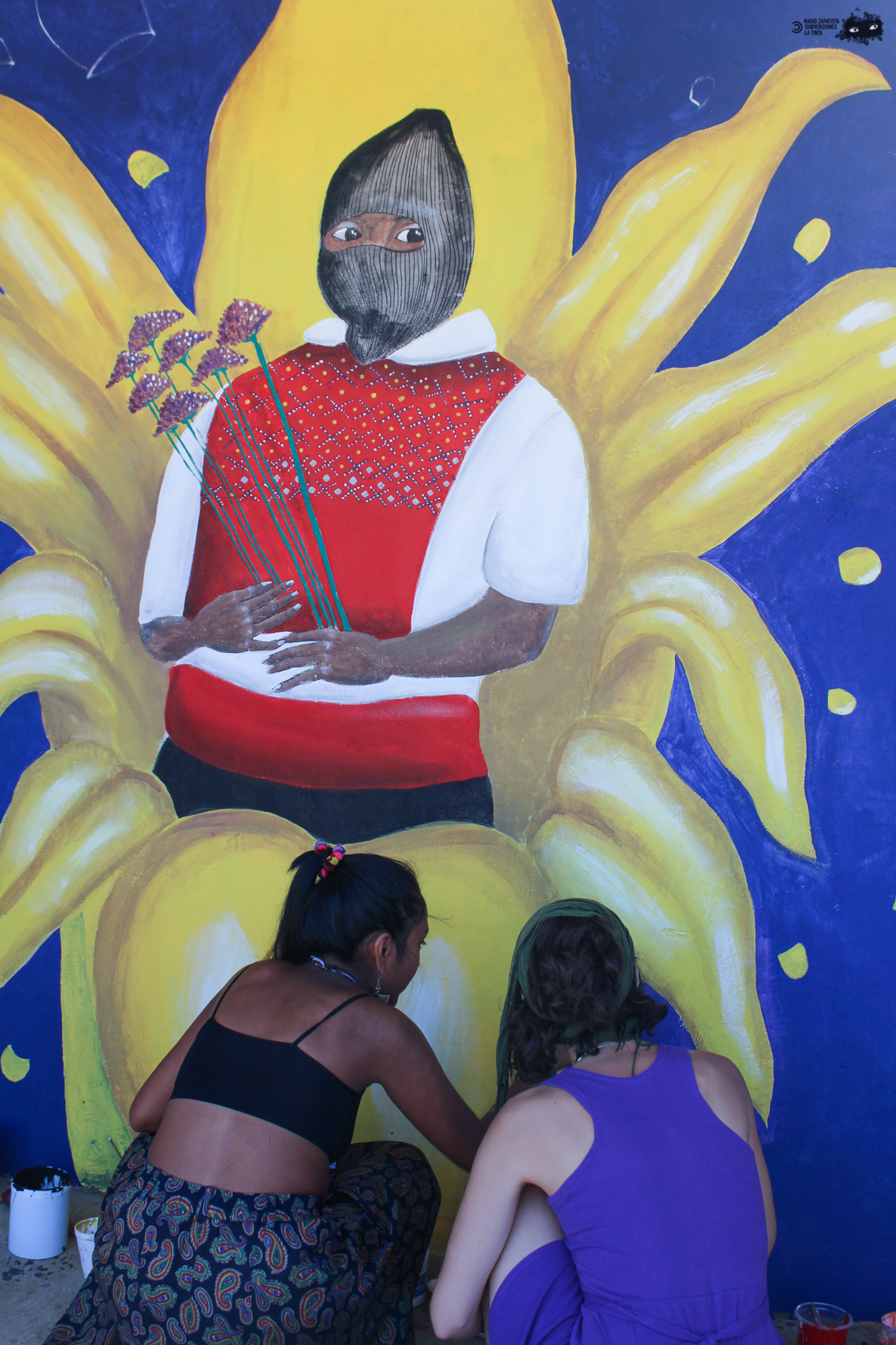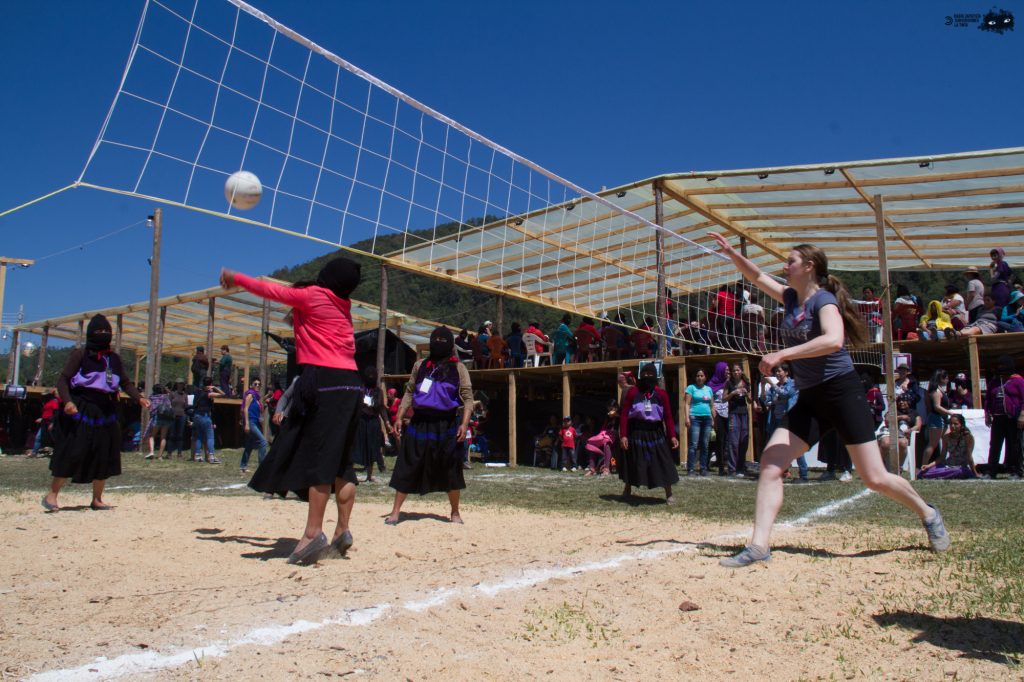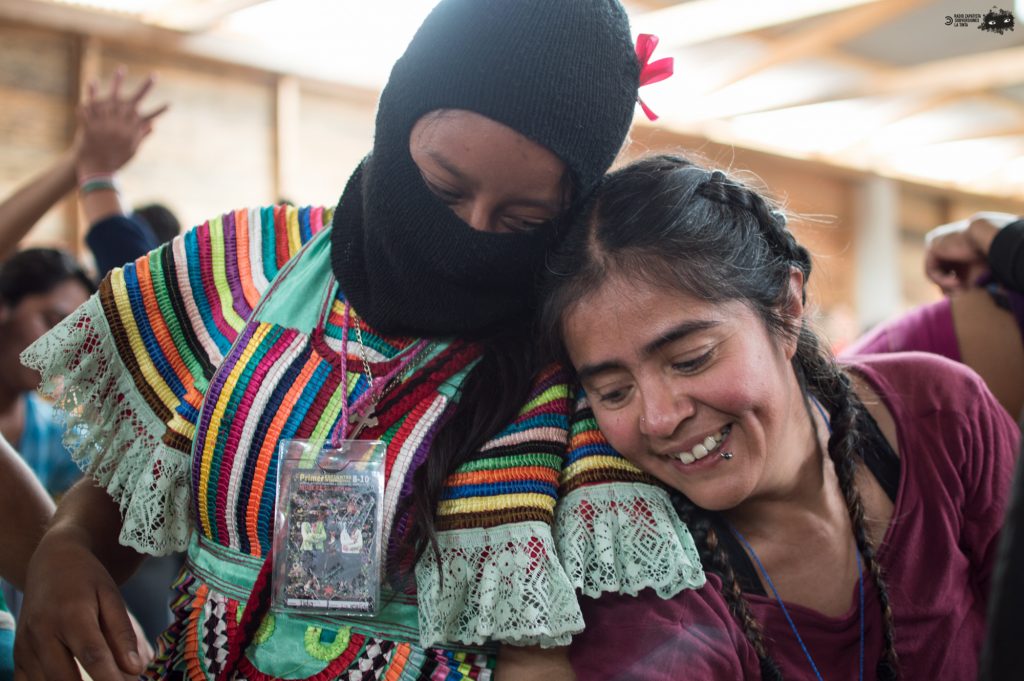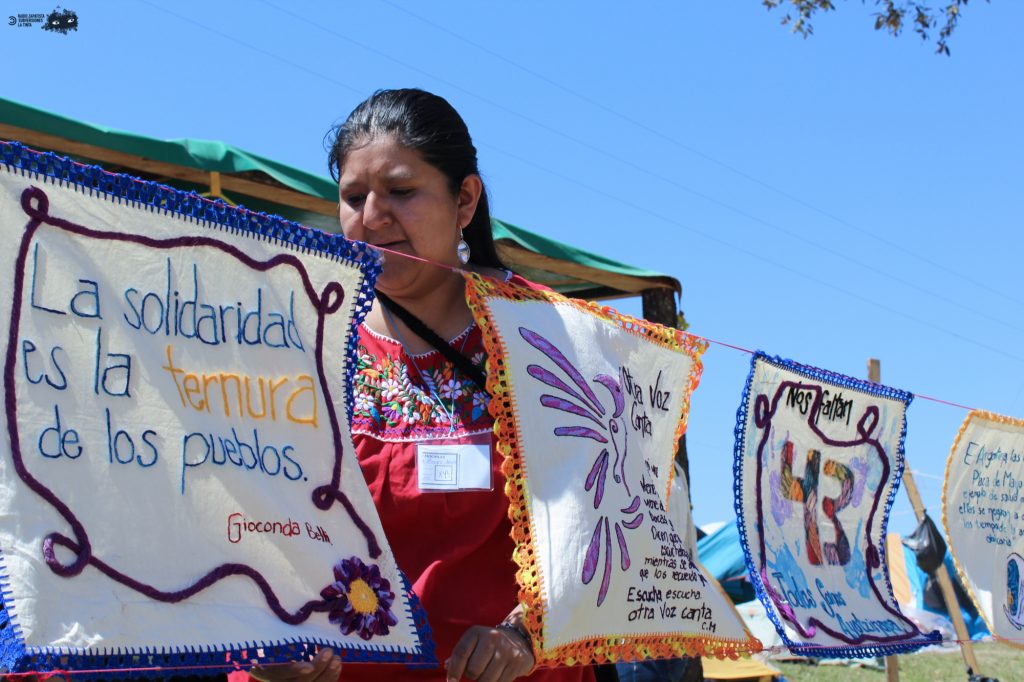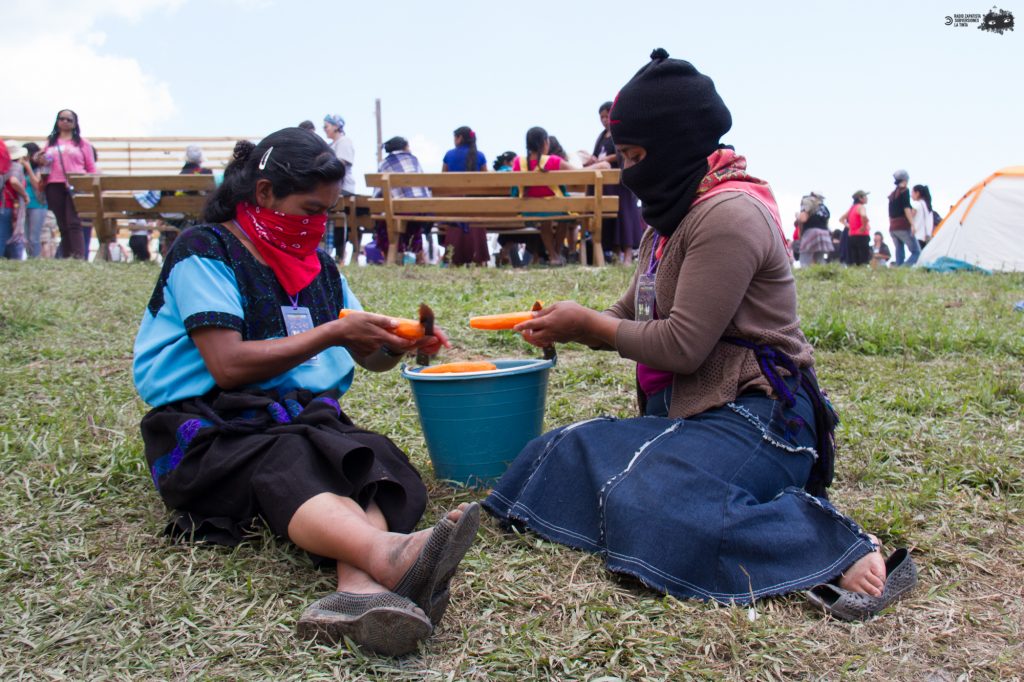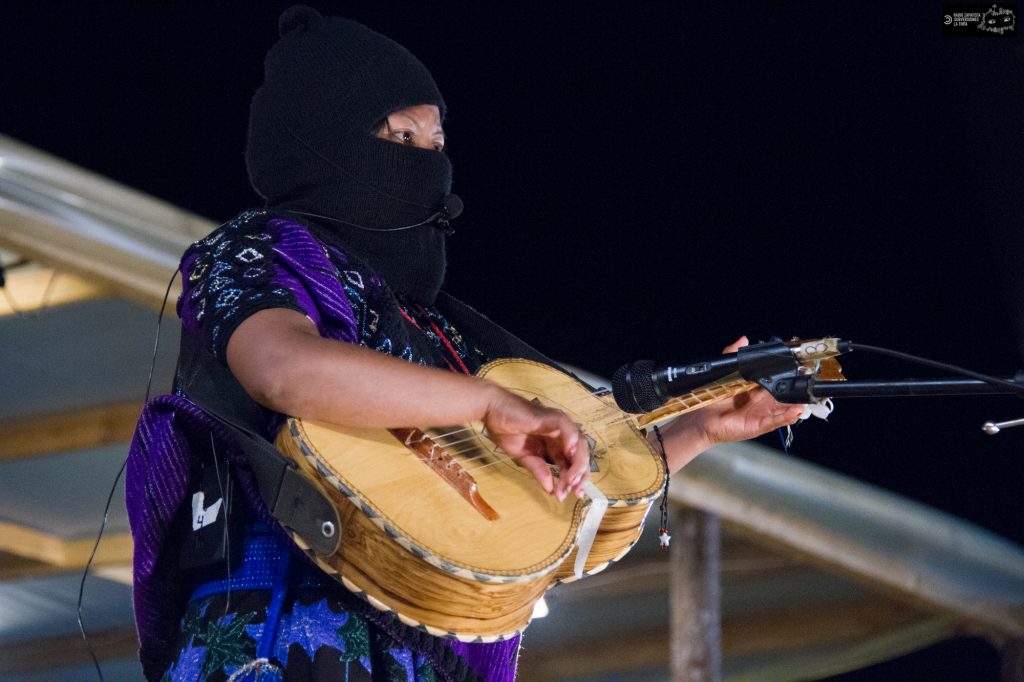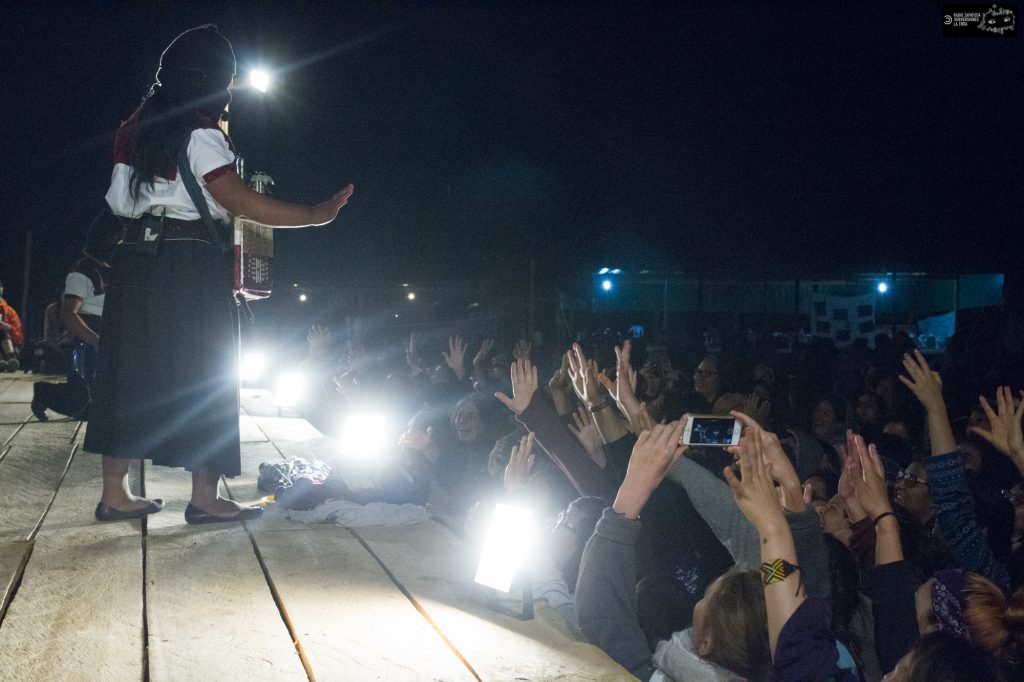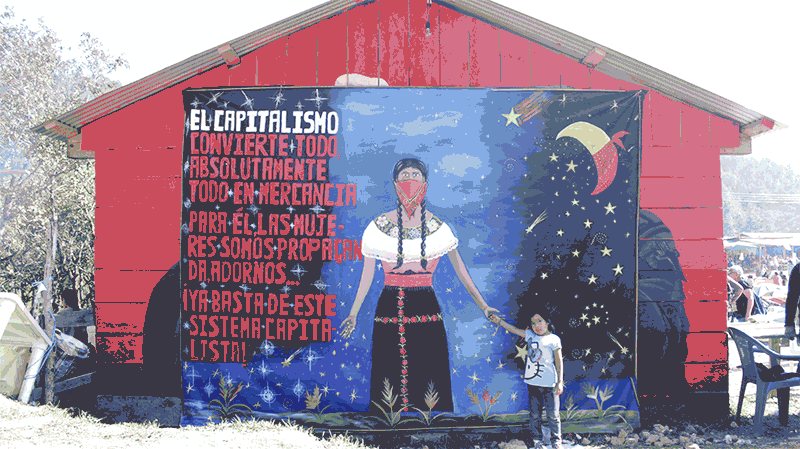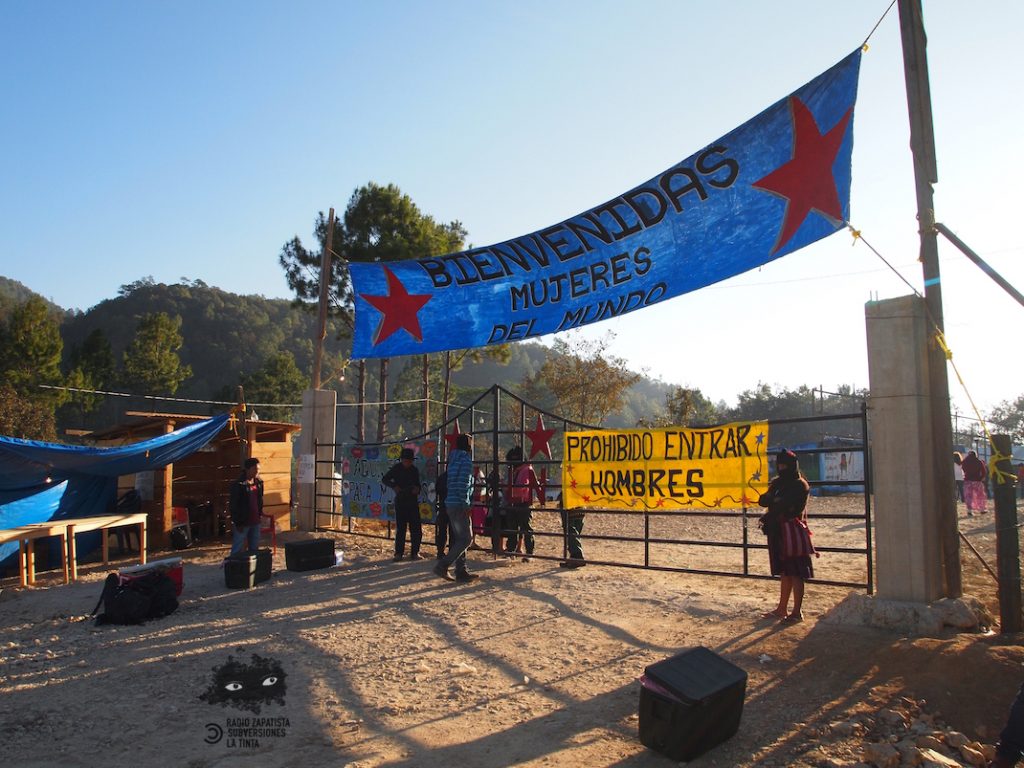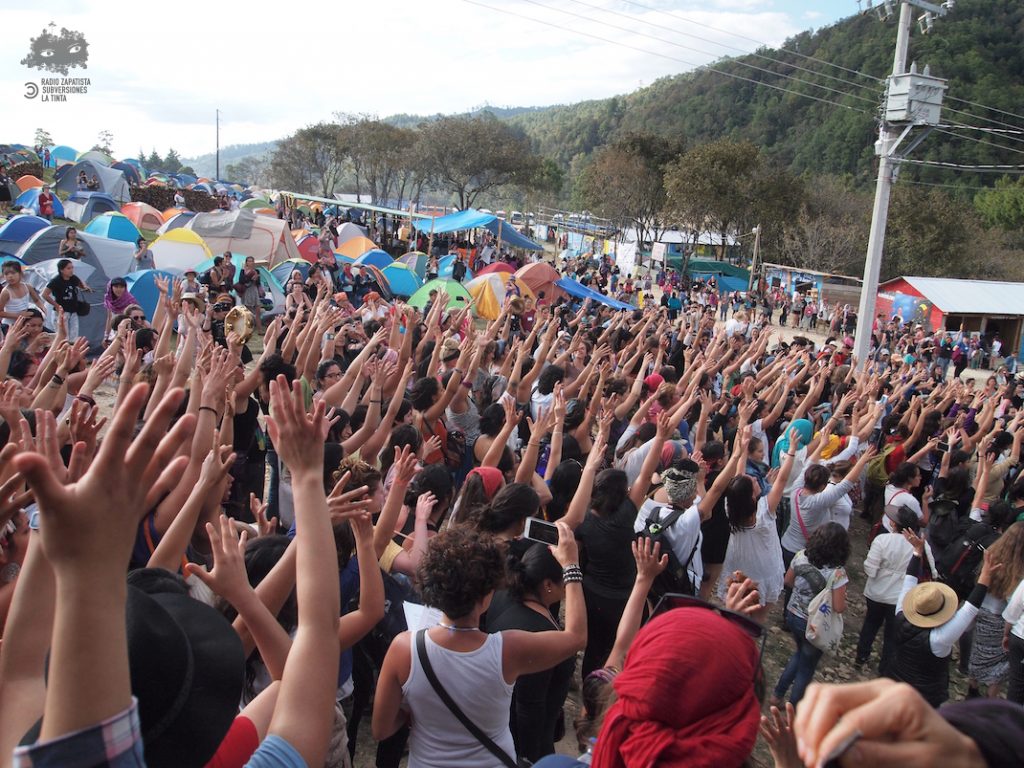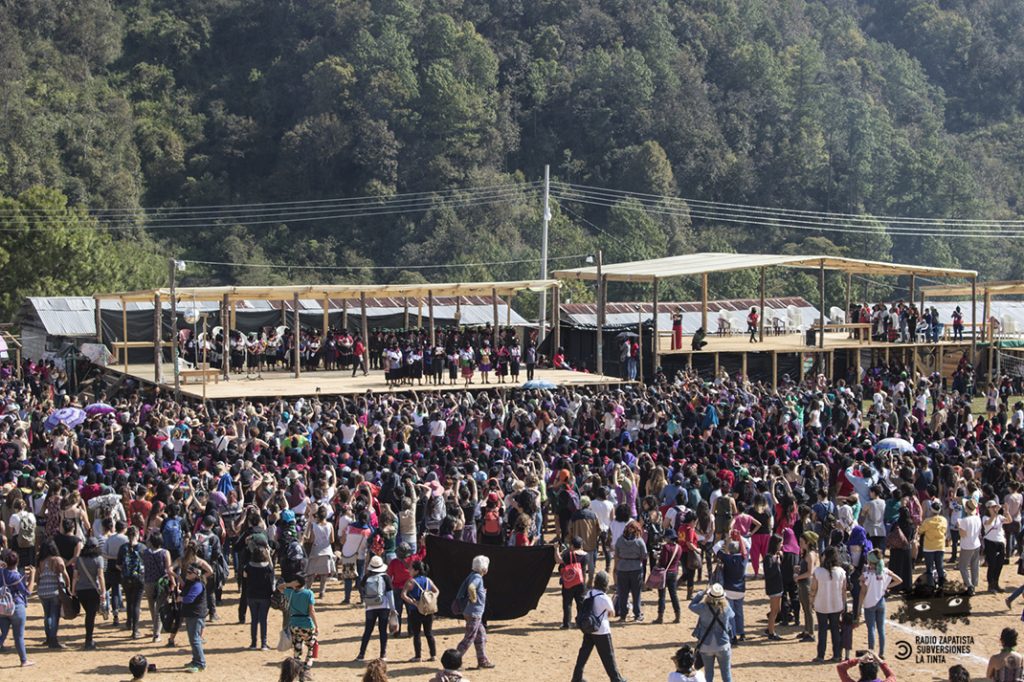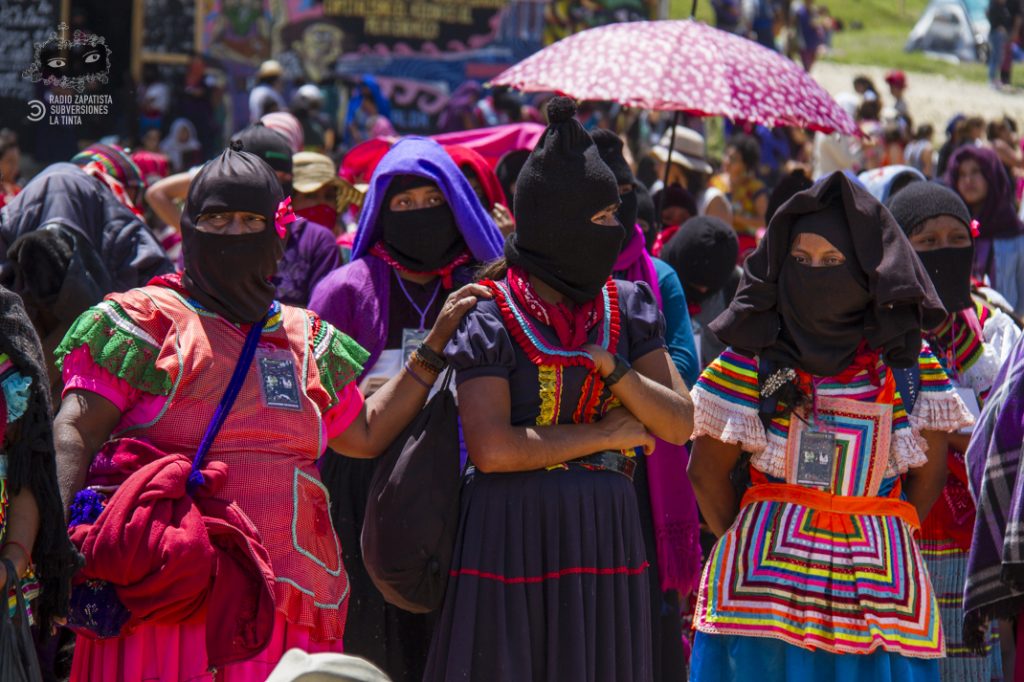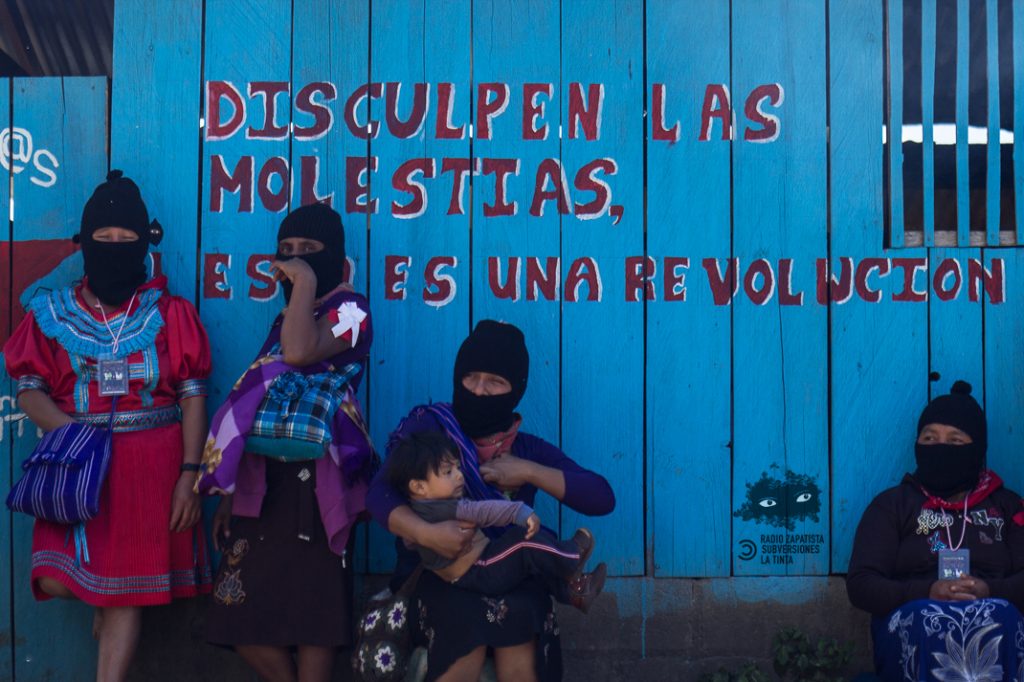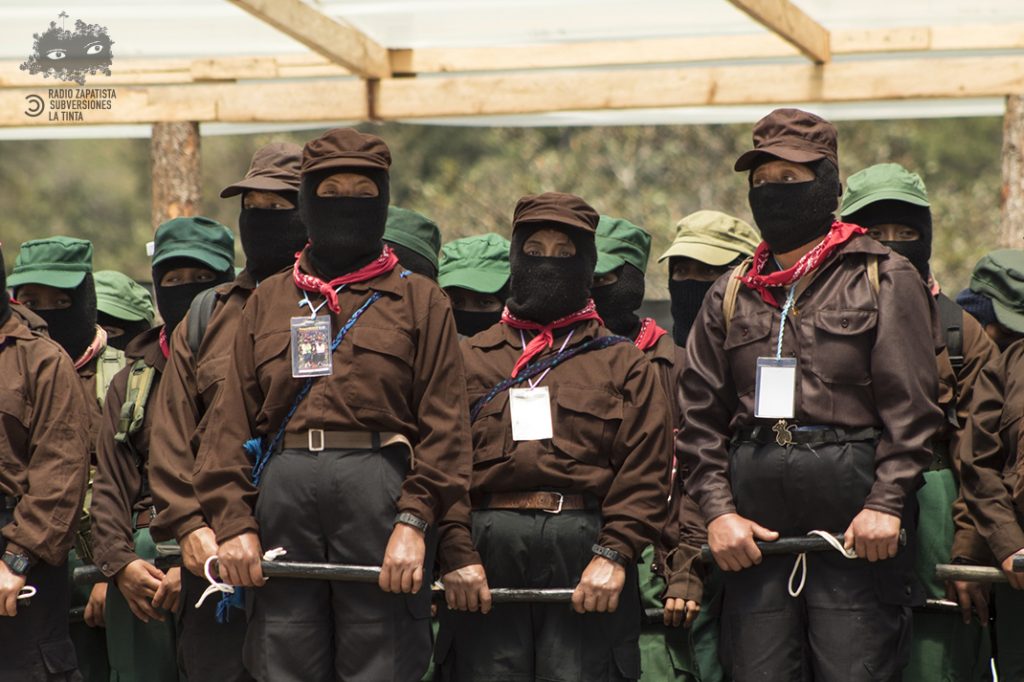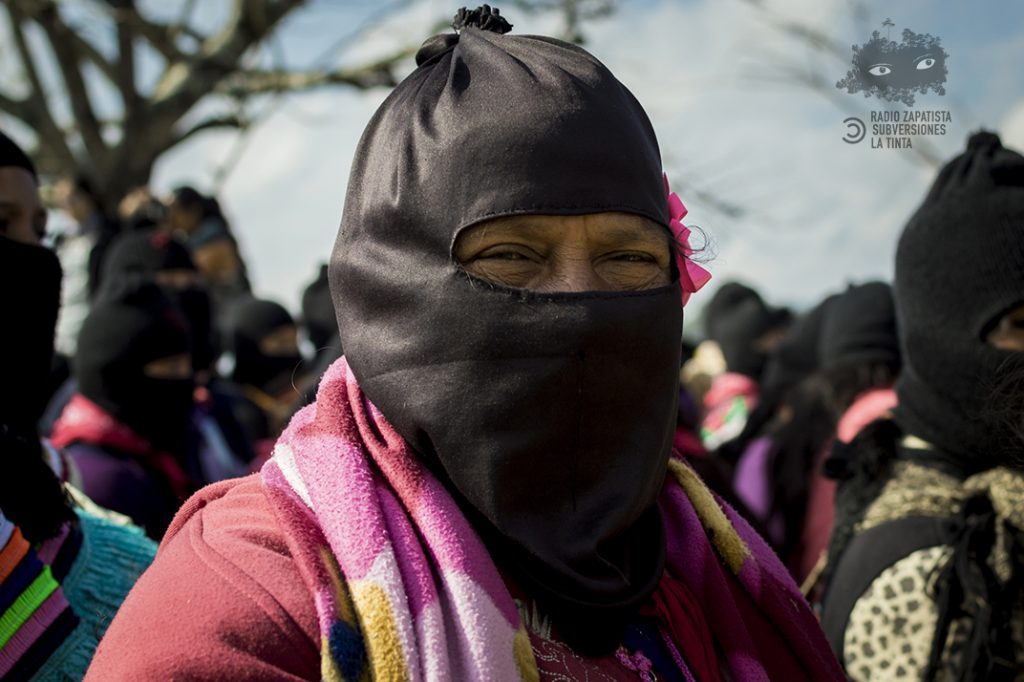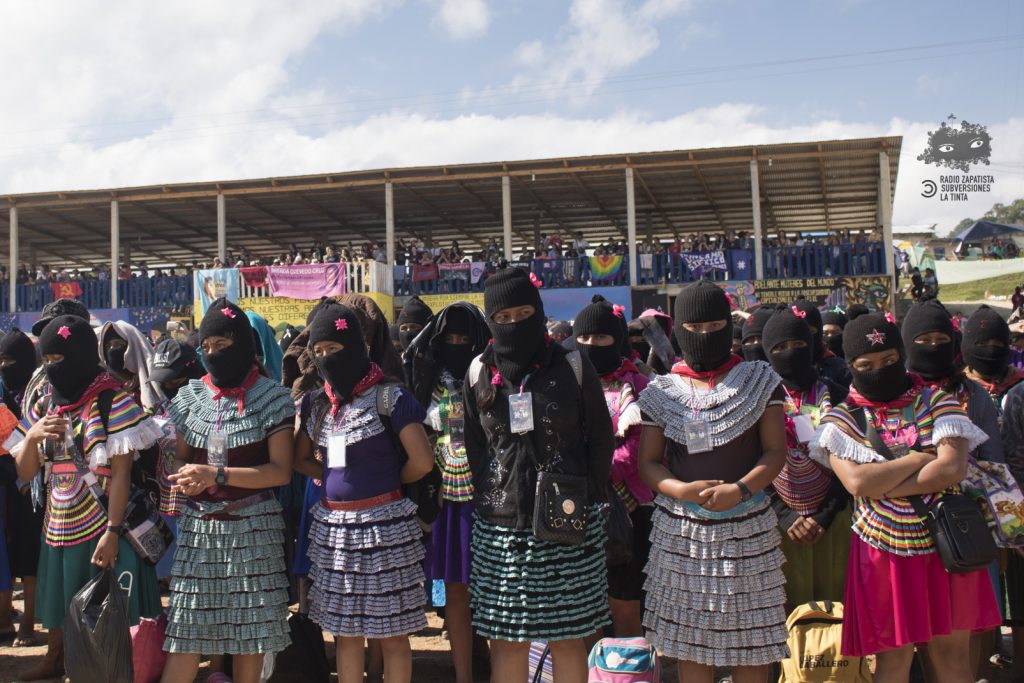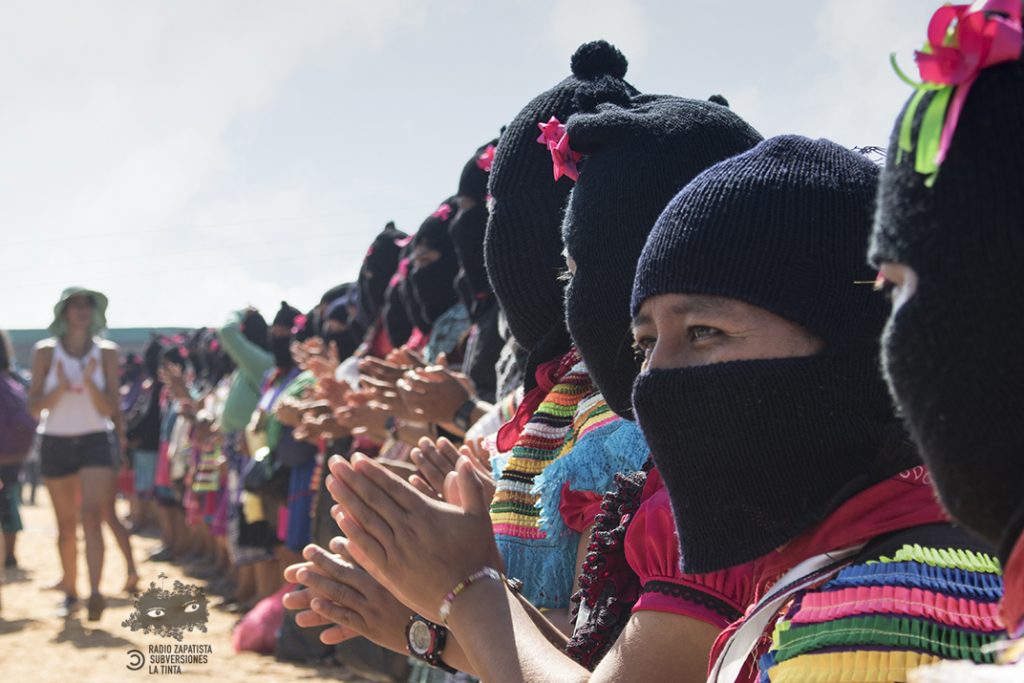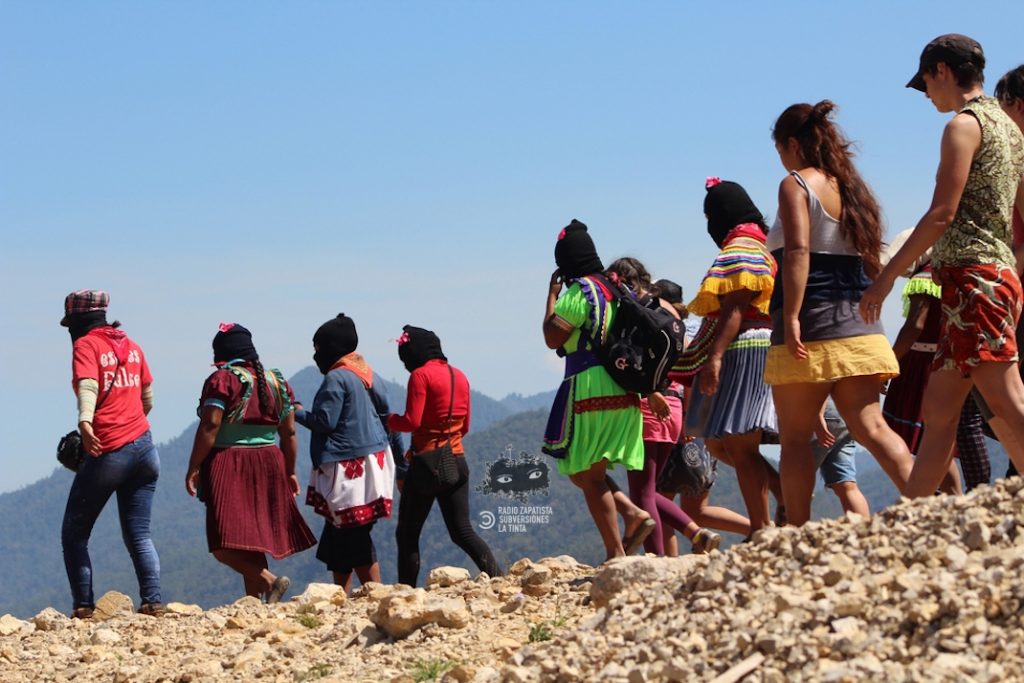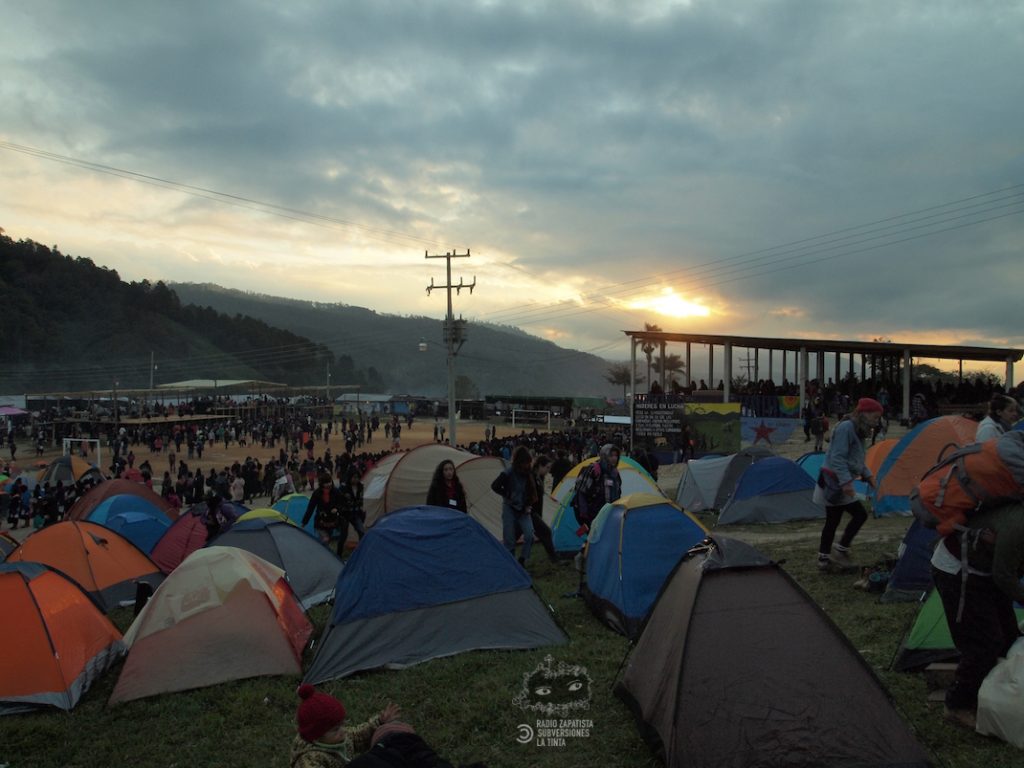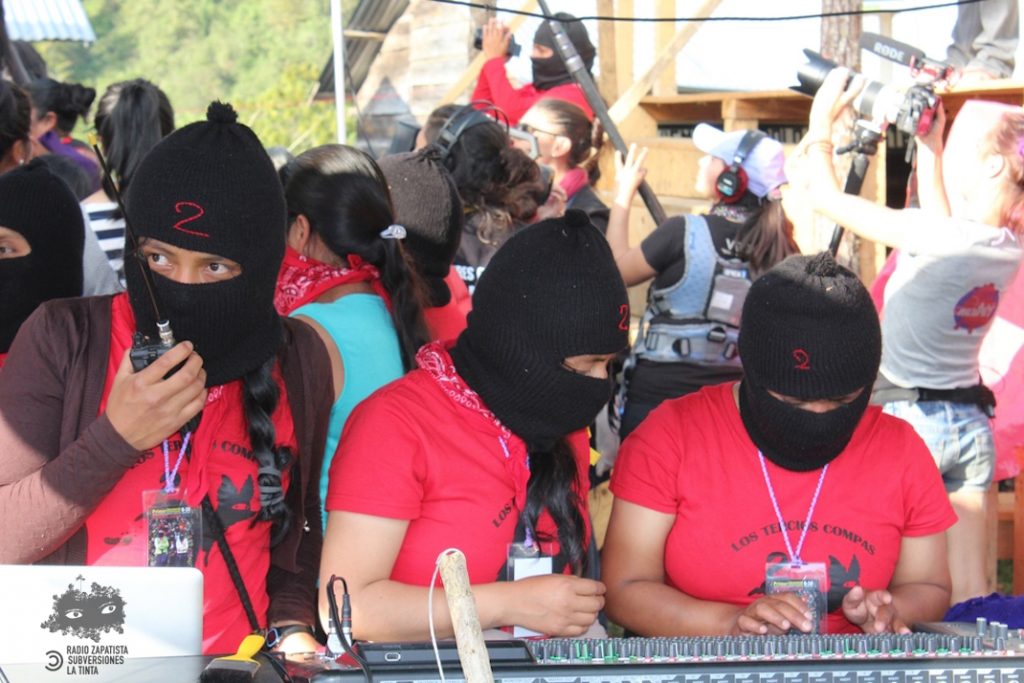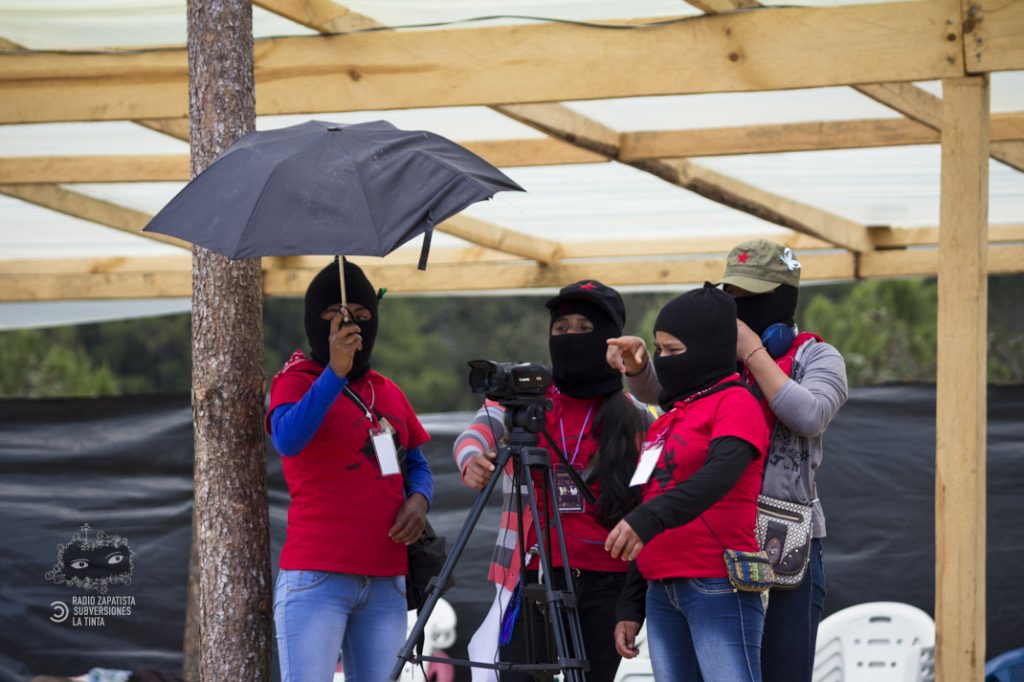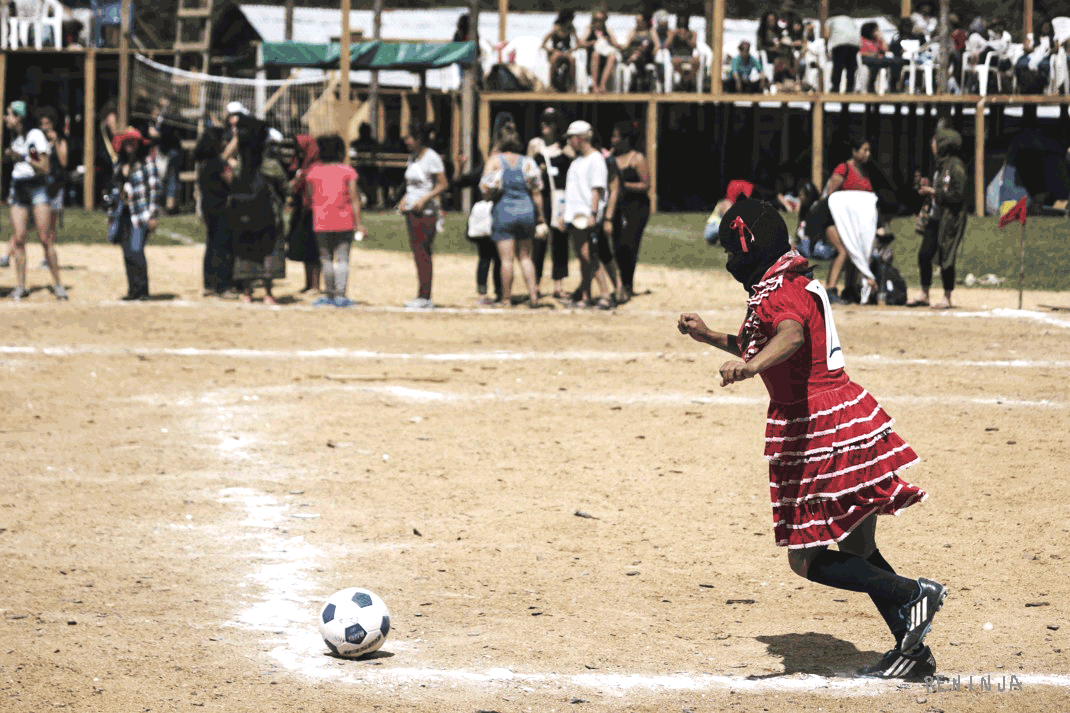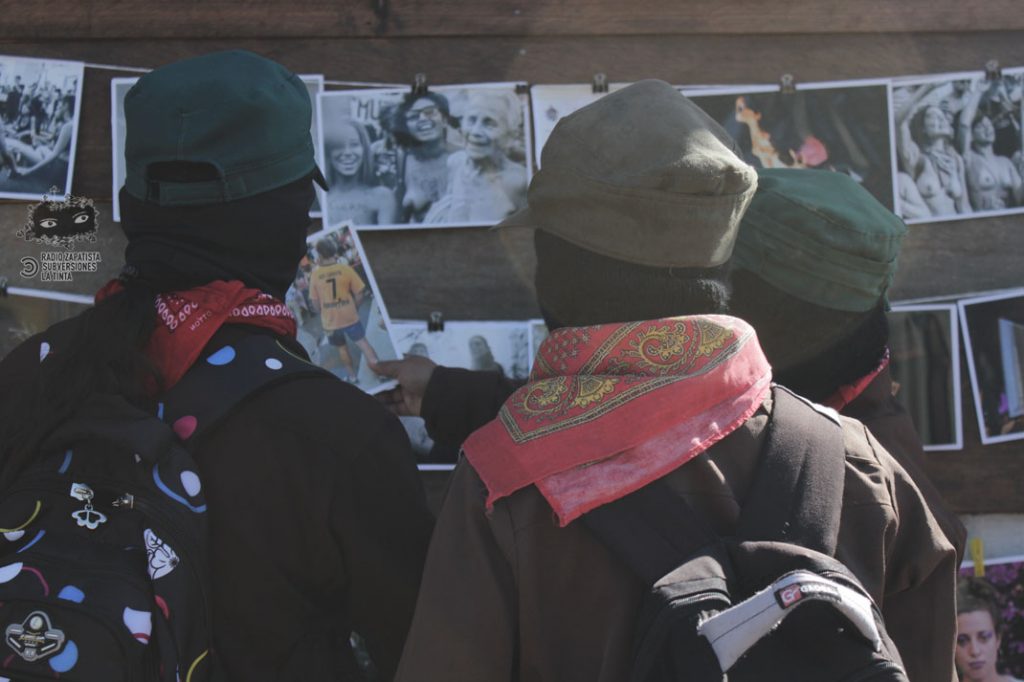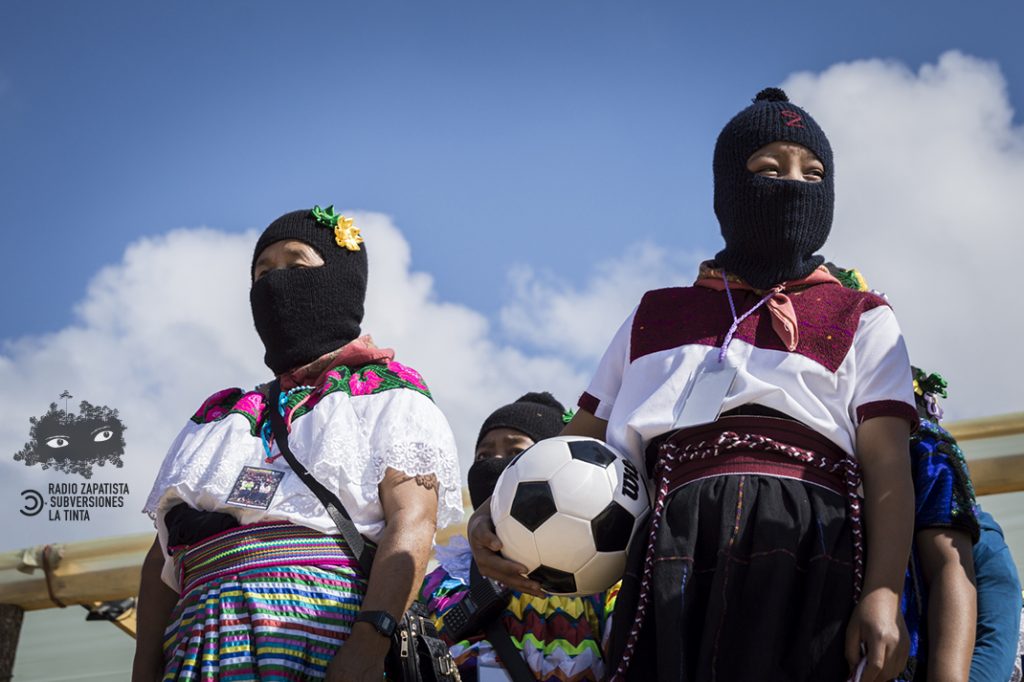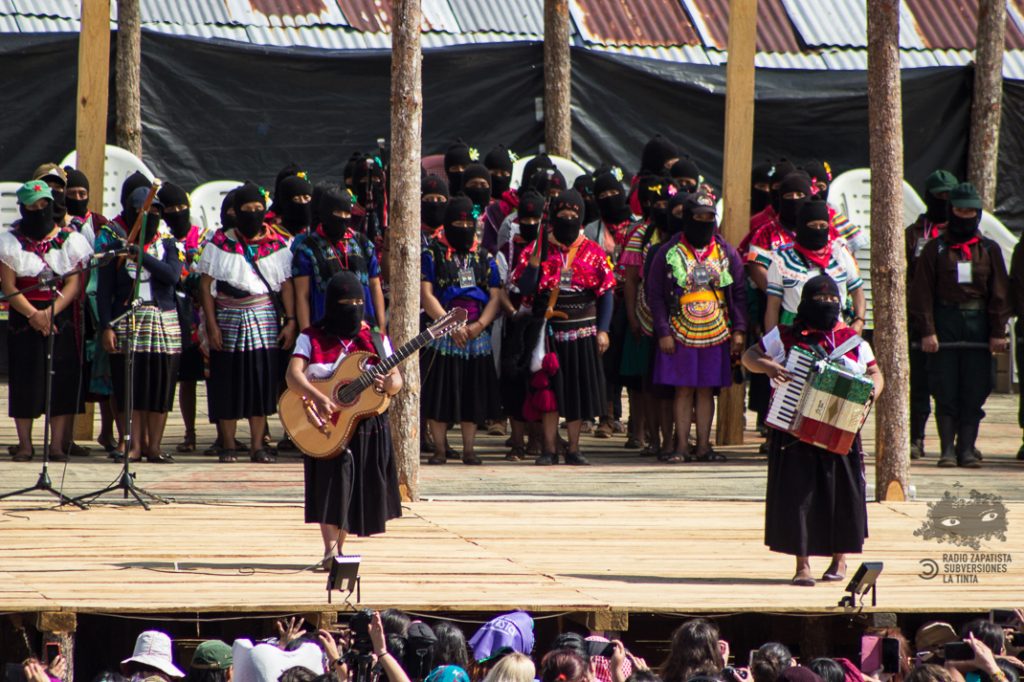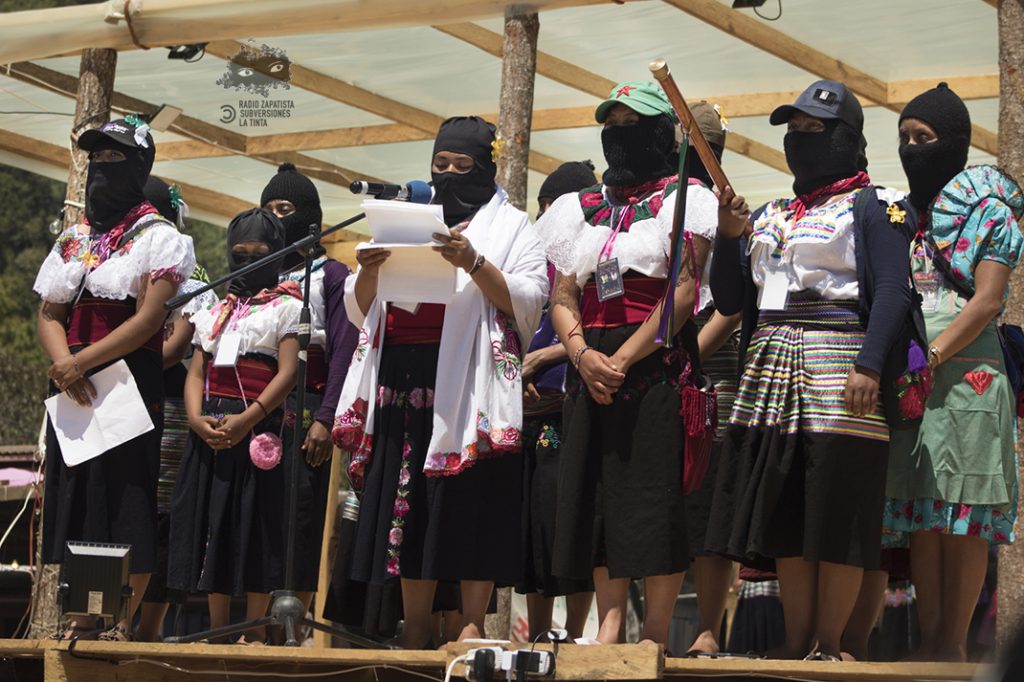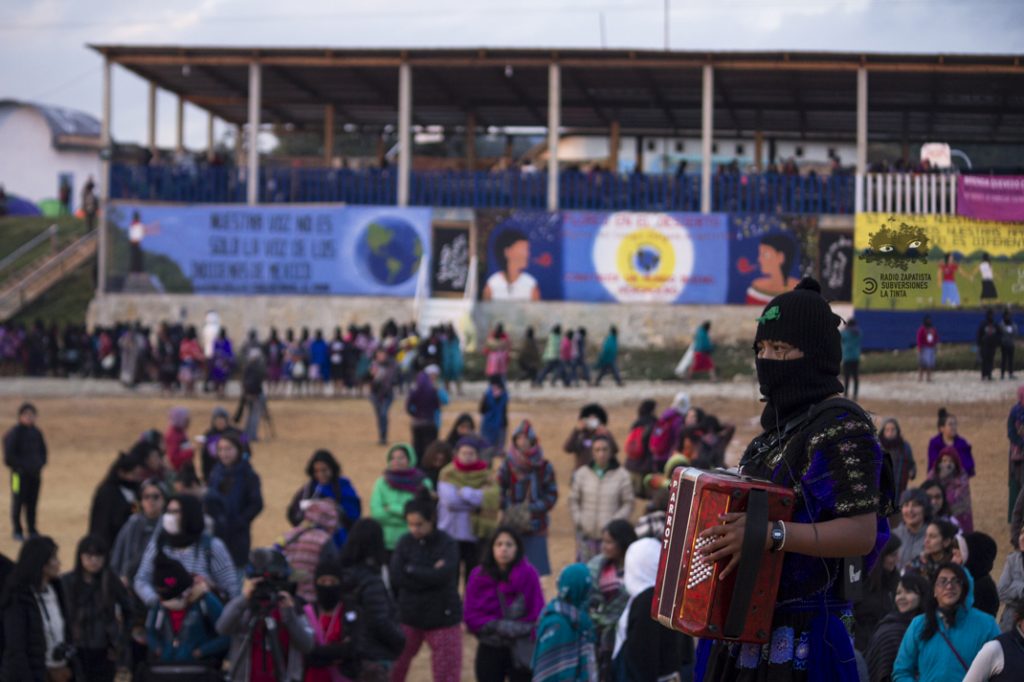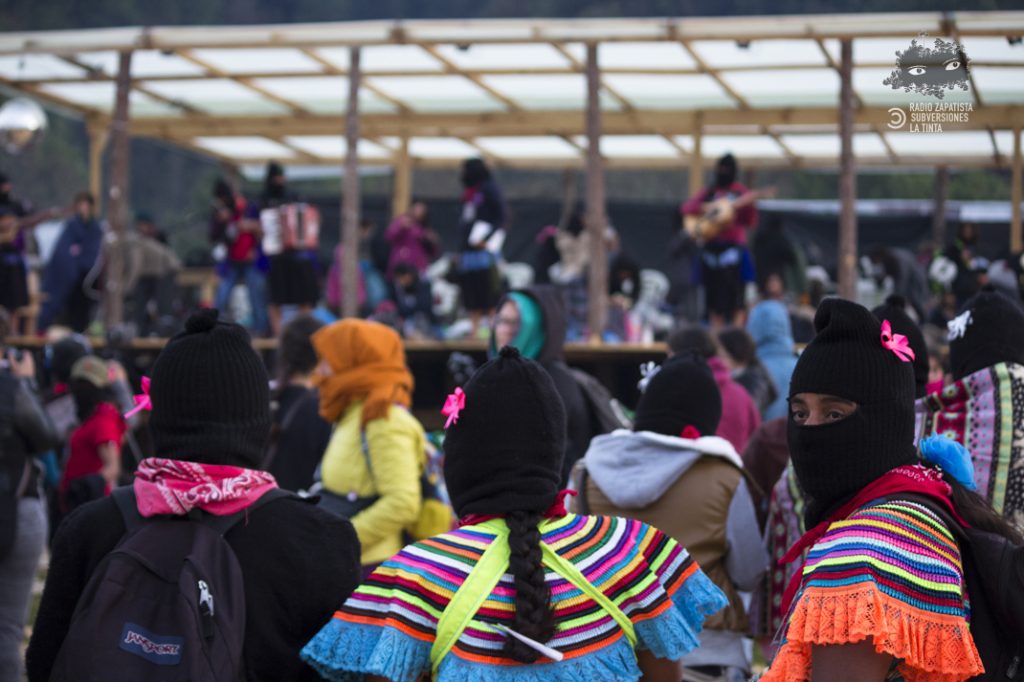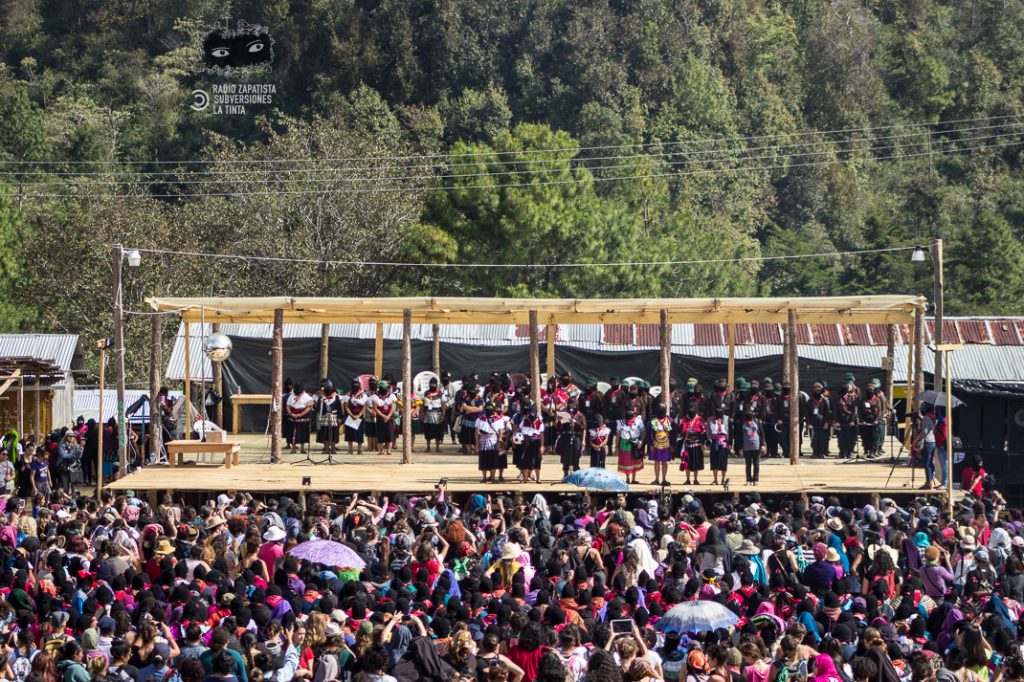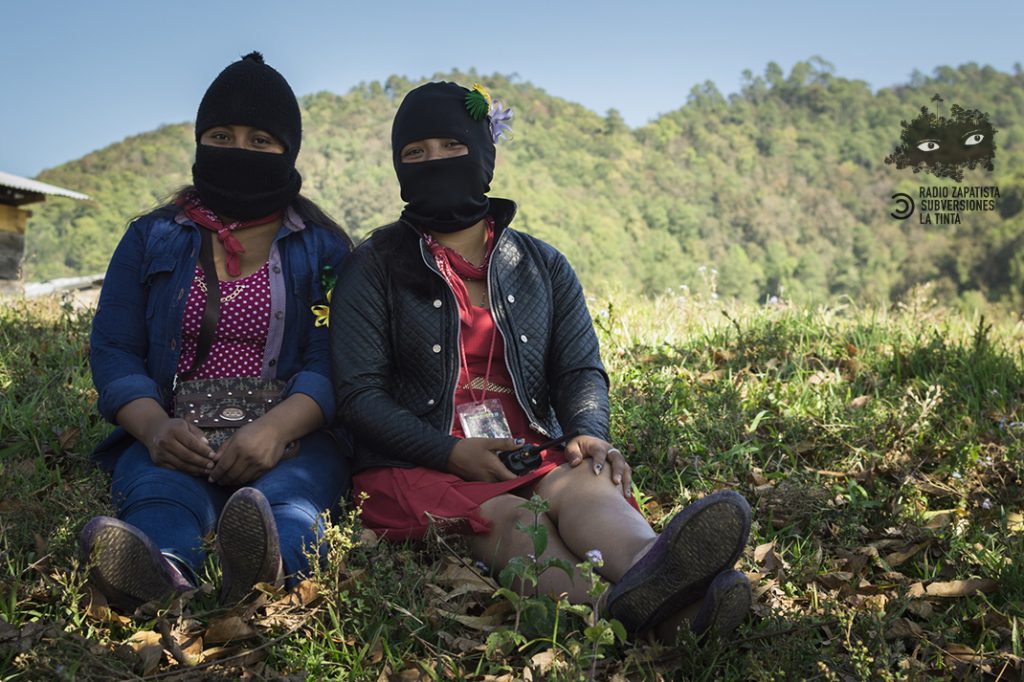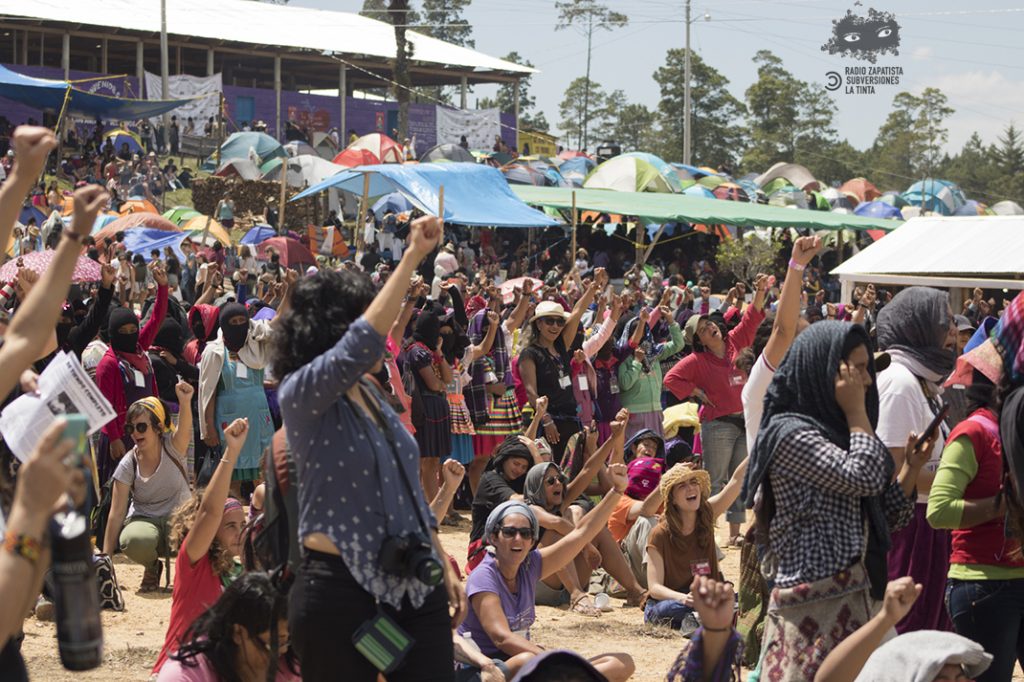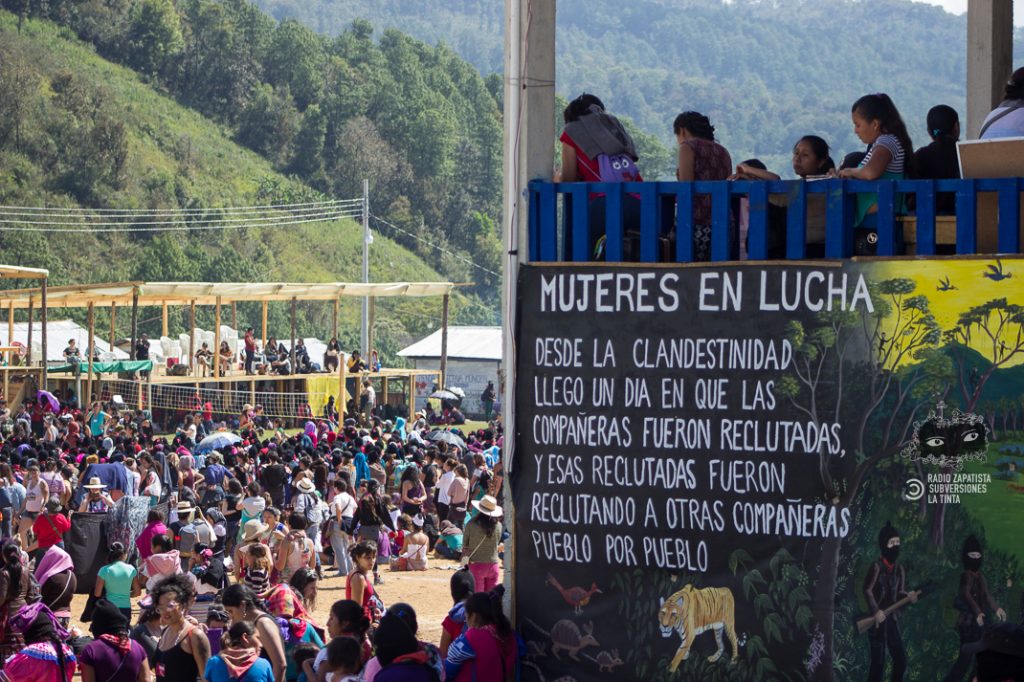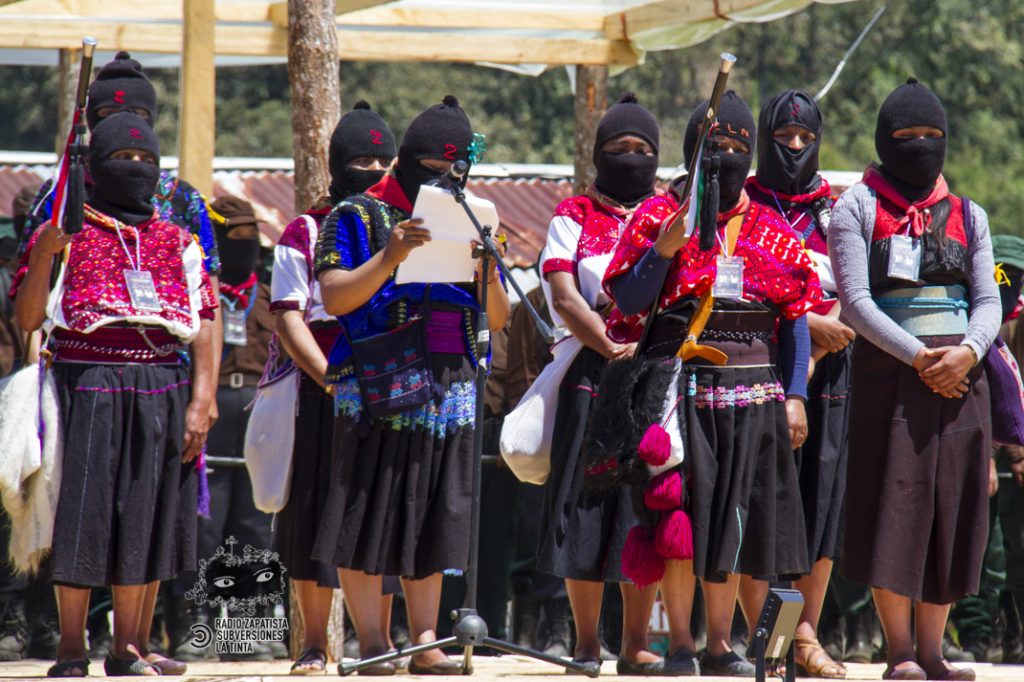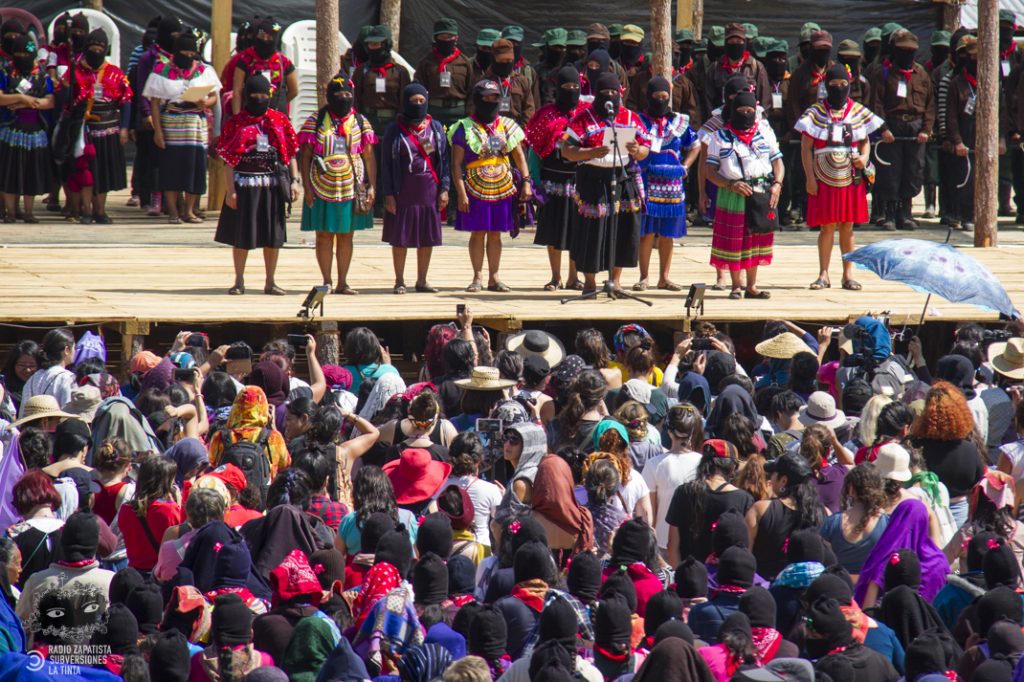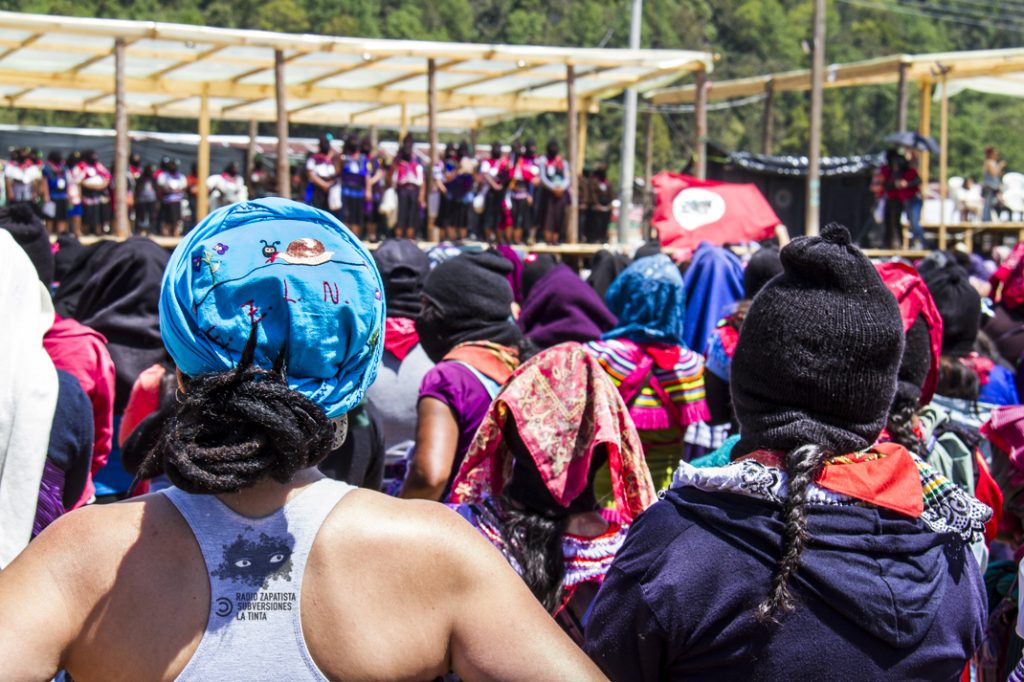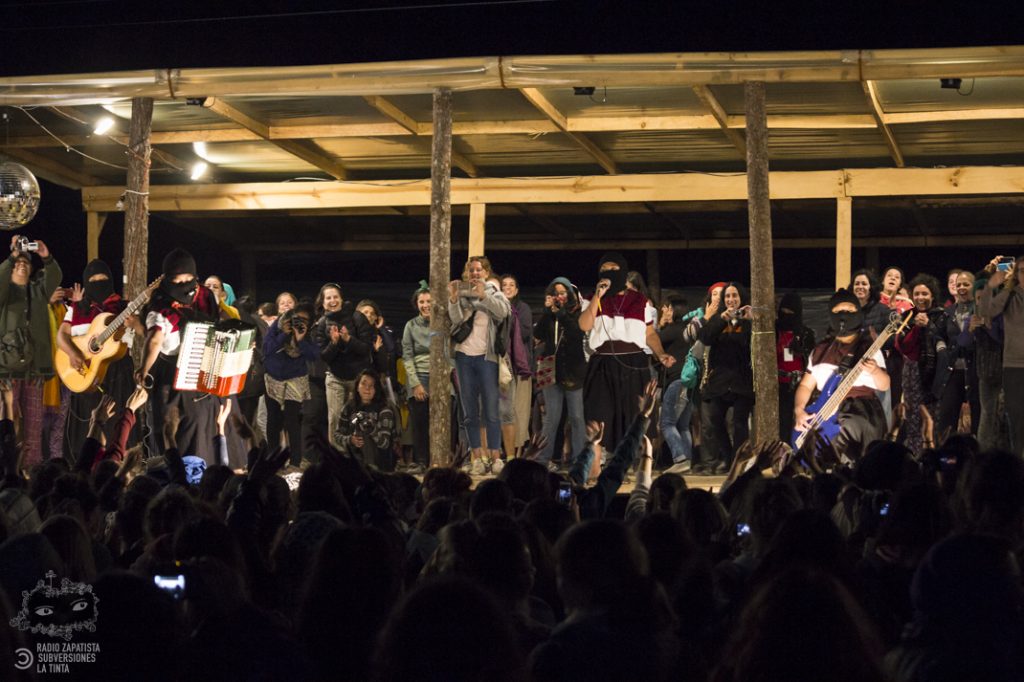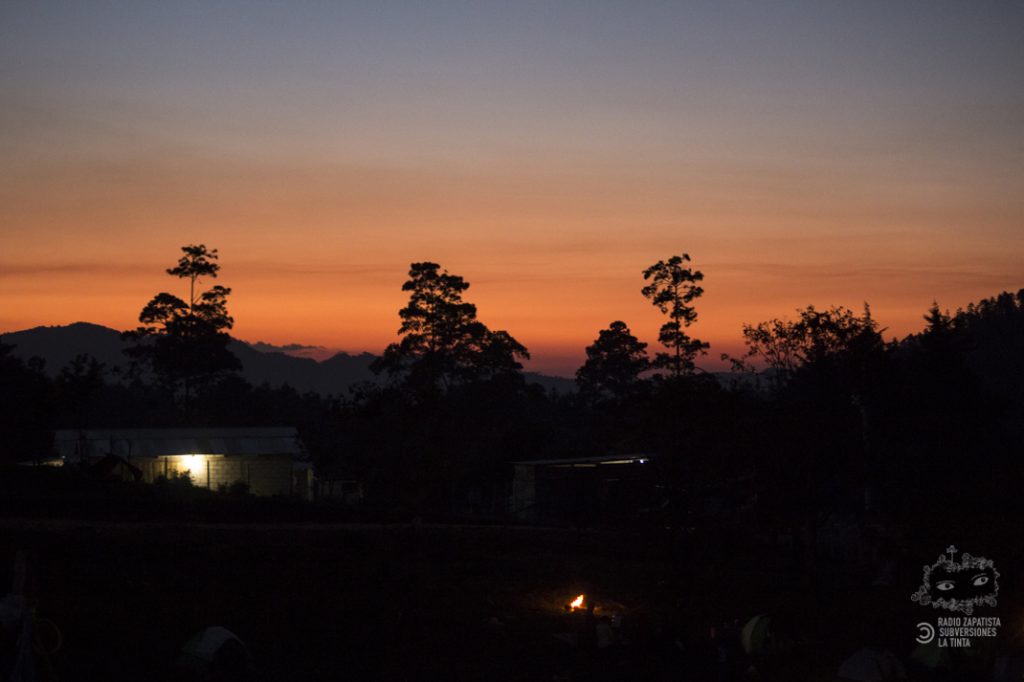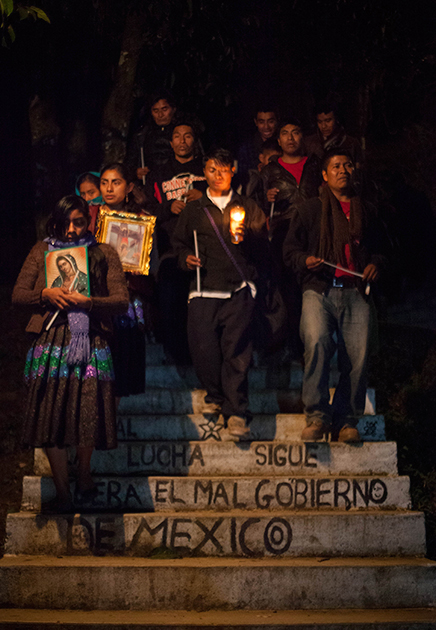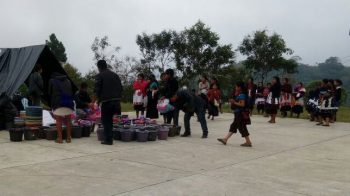
Chiapas

(Español) Campaña Popular se reúne con Embajadora de Suecia
Comunicado de Prensa
San Cristóbal de Las Casas, Chiapas; 17 de marzo de 2018.
La Campaña Popular contra la Violencia hacia las Mujeres y el Feminicidio en Chiapas se reúne con Embajadora de Suecia.
- Violencia feminicida, desplazamiento forzado, militarización, migración, situación de las mujeres indígenas, niñas, niños, adolescentes y feminicidios temas de la agenda.
El pasado martes 13 de marzo de 2018 en la Ciudad de San Cristóbal de Las Casas, Chiapas, integrantes de la Campaña Popular Contra la Violencia hacia las Mujeres y el Feminicidio en Chiapas (Campaña Popular) sostuvieron una reunión con la Embajadora de Suecia en México, la Sra. Annika Thunborg, en el marco del Encuentro de Personas Defensoras de Derechos Humanos en Chiapas.
La organización internacional de acompañamiento a personas defensoras SweFor (Movimiento Sueco por la Reconciliación), como preámbulo, mencionó el interés del gobierno sueco por conocer la situación actual de los derechos humanos de las mujeres y la violencia feminicida en México, trayendo a la memoria la impunidad en que se mantiene el asesinato de la Defensora Digna Ochoa perpetrado en el año 2001 en la Ciudad de México.
Durante el encuentro, las organizaciones participantes denunciaron la existencia de un contexto histórico, persistente y sistemático de violación a los derechos humanos de mujeres, niñas, adolescentes, indígenas y migrantes en Chiapas. Se hizo especial énfasis en el recrudecimiento de la violencia hacia las mujeres, la conflictividad social y la división comunitaria ante la coyuntura electoral.
La Campaña Popular precisó que a más de un año de haberse declarado la Alerta de Violencia de Género las acciones implementadas por el Gobierno de Chiapas tienen un carácter publicitario, manipulador y de uso de las mujeres a través de los programas asistencialistas (ej. PROSPERA, Salario Rosa) y de los partidos políticos, que encubren la grave omisión del Estado Mexicano a su deber de atender, prevenir y sancionar la violencia contra las mujeres.
El Centro de Derechos Humanos Digna Ochoa refirió que las acciones estatales han sido una burla para la lucha contra la violencia hacia las mujeres, ejemplo de ello fue la rodada ciclística realizada el pasado 8 de marzo en la Ciudad de Tonalá, organizada por el Ayuntamiento para “evitar más agresiones a mujeres”, sin que ello trascienda a garantizar acceso a la justicia para las personas denunciantes que refieren que las carpetas de investigación contienen crímenes en impunidad.
Ana Isabel Nigenda Cervantes, de Formación y Capacitación A.C., también denunció la grave situación que enfrentan las mujeres y niñas en el contexto de movilidad humana, quienes se insertan en contextos que vulneran no solo sus derechos sino su dignidad humana, son constantemente víctimas de la violencia estructural, que se presenta en forma de servidumbre, trata de personas, trabajos forzados, tortura y tratos crueles e inhumanos, explotación y violencia sexual, embarazos no deseados, secuestros, extorsiones, desapariciones forzadas, violencia intrafamiliar y feminicidios, por parte de grupos delictivos, sumado al abuso de las autoridades mexicanas civiles y militares. En Chiapas existe incluso una Fiscalía Especializada para personas Migrantes y otra especializada contra la Trata de Personas y ninguna de estas es funcional pese a que estamos en un estado fronterizo en donde las denuncias por trata y abuso a personas migrantes es una constante que documentamos las organizaciones defensoras de derechos humanos.
Jennifer Haza de la organización Melel Xojobal, expusó el contexto de violencia por la que atraviesan niñas y adolescentes, ya que desde 2011 a la fecha se han registrado 47 feminicidios de niñas y adolescentes por su condición de género, de igual forma mencionó que en Chiapas un 44% de mujeres de 15 años o más han experimentado algún tipo de violencia.
Gloria Flores y Julieta Gómez del Centro de Derechos de la Mujer de Chiapas, AC, denunciaron que la situación de violencia cultural que viven las mujeres indígenas y campesinas fue otro de las temáticas que, de manera atenta, escuchó la Embajadora Thunborg, sobre la cual el Gobierno de Chiapas ha demostrado su falta de interés y capacidad para abordar con políticas adecuadas la transformación de las prácticas culturales que las discriminan, así como la generación de acciones que les garanticen el acceso a la justicia y combatan la constante impunidad de la violencia feminicida y los feminicidios que se han registrado en las comunidades de la Entidad. El no tener acceso a la justicia las hace más vulnerables y deciden no denunciar porque las revictimizan.
Karla Aguilar Herreros, de la Organización Agua y Vida: Mujeres, Derechos y Ambiente A.C., compartió la omisión del Estado a su deber de garantizar a las mujeres el acceso al agua potable y a servicios de salud de calidad. Lo que ha generado el incremento de muertes maternas, tracoma y diabetes. En este sentido, San Cristóbal de Las Casas, Bejucal de Ocampo, y El Porvenir son los municipios con más alto índice de muerte materna. También denunció que en todo Chiapas existe una falta de infraestructura hospitalaria significativa que se refleja en el funcionamiento de únicamente dos bancos de sangre (Tapachula y Tuxtla Gutiérrez) para toda la Entidad. El Colectivo, de igual manera, hizo hincapié en las violaciones sexuales a mujeres en el trayecto de su casa al ojo de agua.
Susana Montes, del Centro de Derechos Humanos Fray Bartolomé de Las Casas, AC alertó sobre las consecuencias que la militarización genera en la vida de las mujeres y sus comunidades, situación que debe atenderse ante la posible aplicación de la Ley de Seguridad Interior. Además Chiapas ha vivido la violencia que la incursión militar en los territorios conlleva: desaparición forzada, desplazamientos, ejecuciones extrajudiciales, violaciones, aumentos de embarazos e hijos sin padres, etc.
Mercedes Ozuna de Semilla del Sur denunció la falta de atención a las 1329 personas desplazadas en el municipio de Chalchihuitan, Chiapas, a quienes el Gobierno de Chiapas ha dejado de suministrar alimentos y atención médica a pesar del compromiso que adquirió ante organismos internacionales de defensa de los derechos humanos, entre ellos, la Oficina del Alto Comisionado de Naciones Unidas.
Martha Figuera, de COLEM, expusó que en períodos electorales los feminicidios aumentan, que si bien el Gobierno de Chiapas se ha comprometido a atender la problemática, las acciones han sido insuficientes y solicitó a la Embajadora transmitiera esta información al Gobierno de Suecia para que se pronuncié respecto del incumplimiento del Estado Mexicano a su deber de garantizar los derechos humanos específicamente de las mujeres y niñas.
Las participaciones terminaron con la palabra de dos personas desplazadas del Municipio de Chalchihuitan, quienes narraron la situación de desplazamiento forzado a causa de grupos civiles armados y las condiciones actuales en las que viven tras el olvido institucional.
El encuentro finalizó con una ronda de preguntas por parte de la Embajadora, quien mostró interés en cada una de las participaciones de las integrantes de la Campaña Popular.
¡No más violencia contra las mujeres!
Atentamente:
Campaña Popular contra la Violencia hacia las Mujeres y el Feminicidio en Chiapas
(Español) “Ven, mírale, organízate, resiste”
Cobertura Colaborativa del Primer Ecuentro Internacional, Político, Artístico, Deportivo y Cultural de Mujeres que Luchan. Chiapas, México, Marzo 2018
Por Radio Zapatista, Subversiones y La Tinta
El fuego de la palabra que nos incendia
Las luces de nuestras ancestras que nos guían
El latir de tambores que resuenan en los huesos
Y la danza de mujeres-bosque,
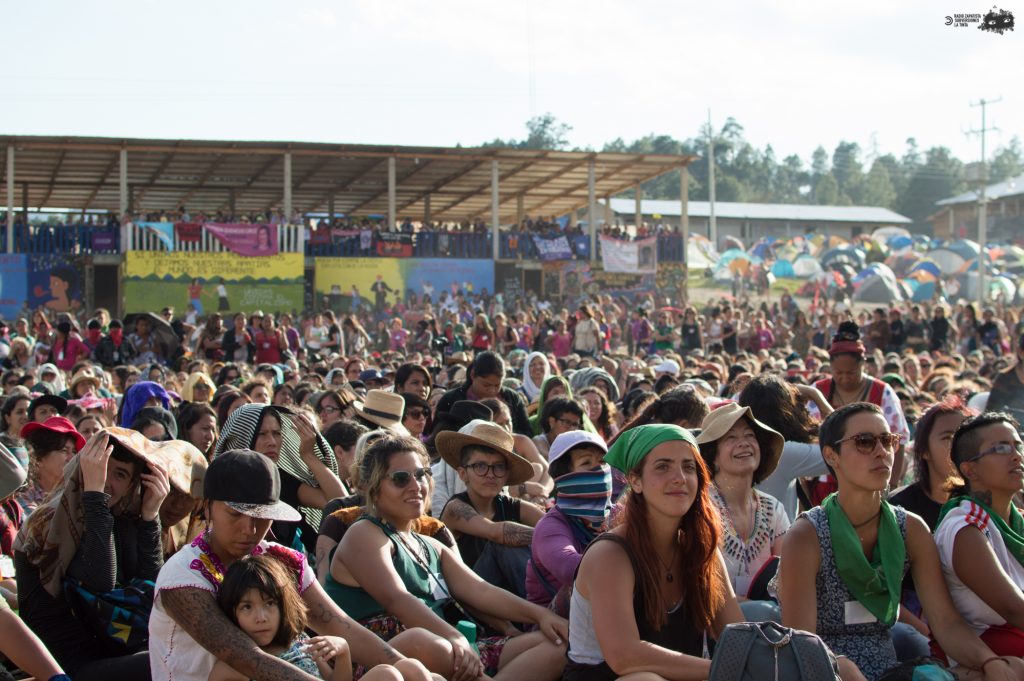
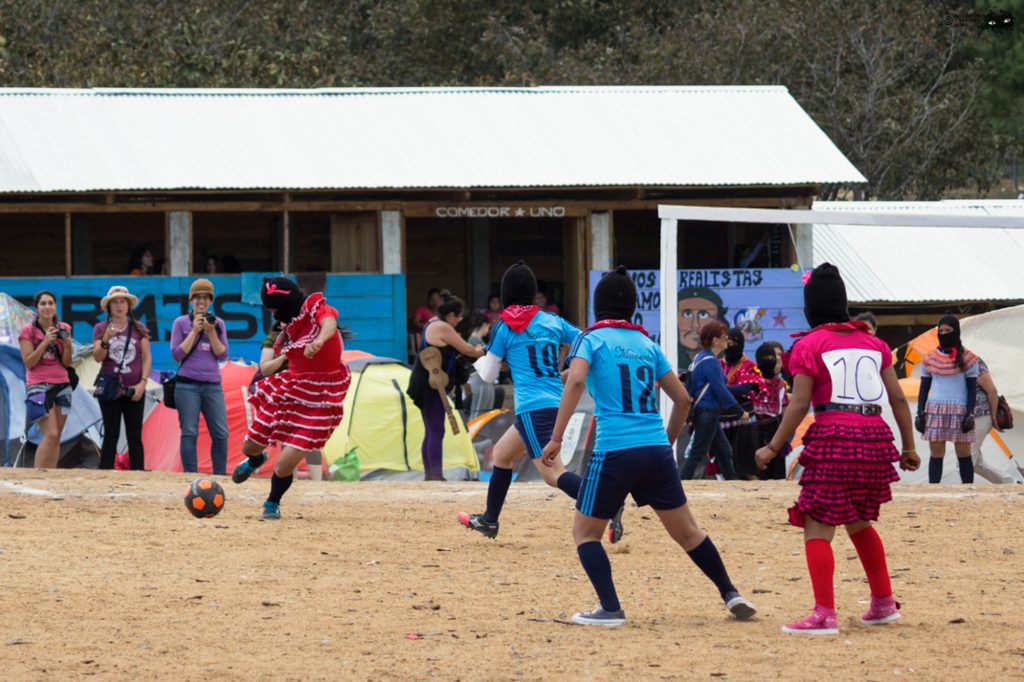
Mujeres-monte
Un solo cuerpo hecho abrazo que
construye un mundo hecho de muchos mundos
(diferentes espacios-tiempos-modos bailan)
El sol bendice rituales de sanación
Y las carcajadas colectivas
Resuenan entre las montañas
Arte en palabra, en color, en sonido,
en movimiento, en miradas
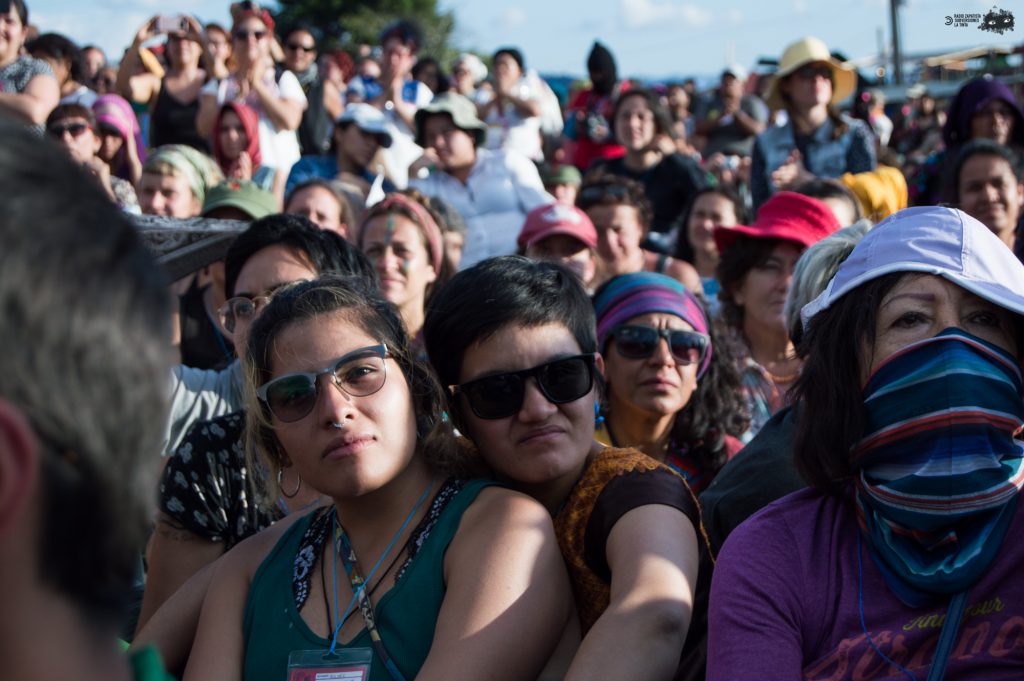
Un espacio seguro, donde hay libertad y dignidad
Presencia honesta de muchas voces originarias y guerreras
Agitándose y en sincronía
Un niño dice que parece una película
Y una obra representa nuestras opresiones
Una niña duerme al cuidado colectivo,
mientras su madre busca café zapatista
Y el maíz nativo como alimento,
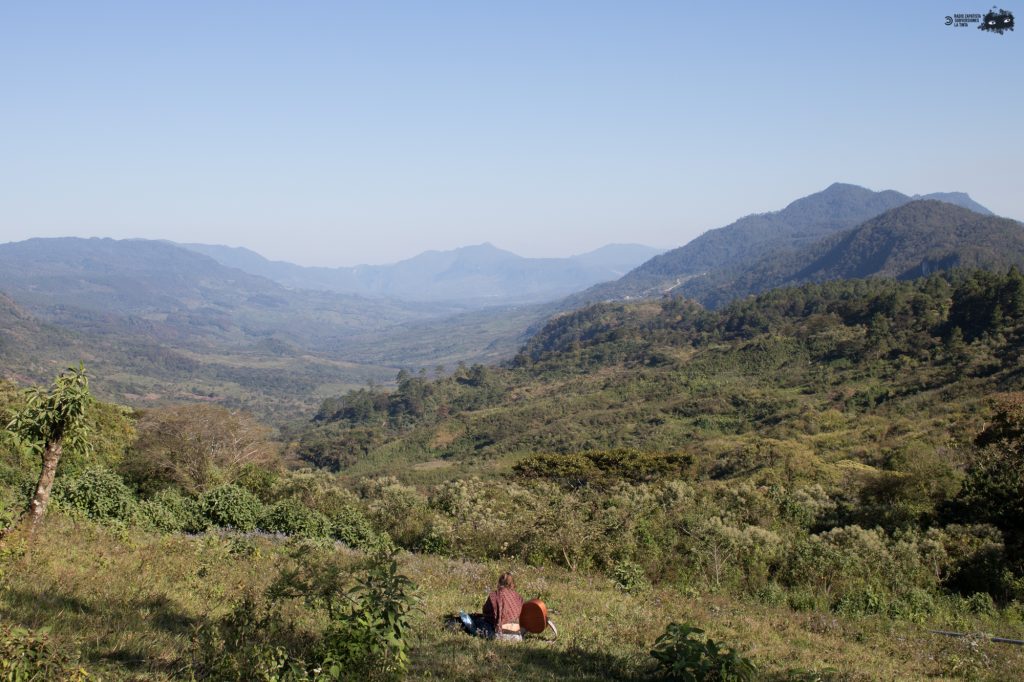
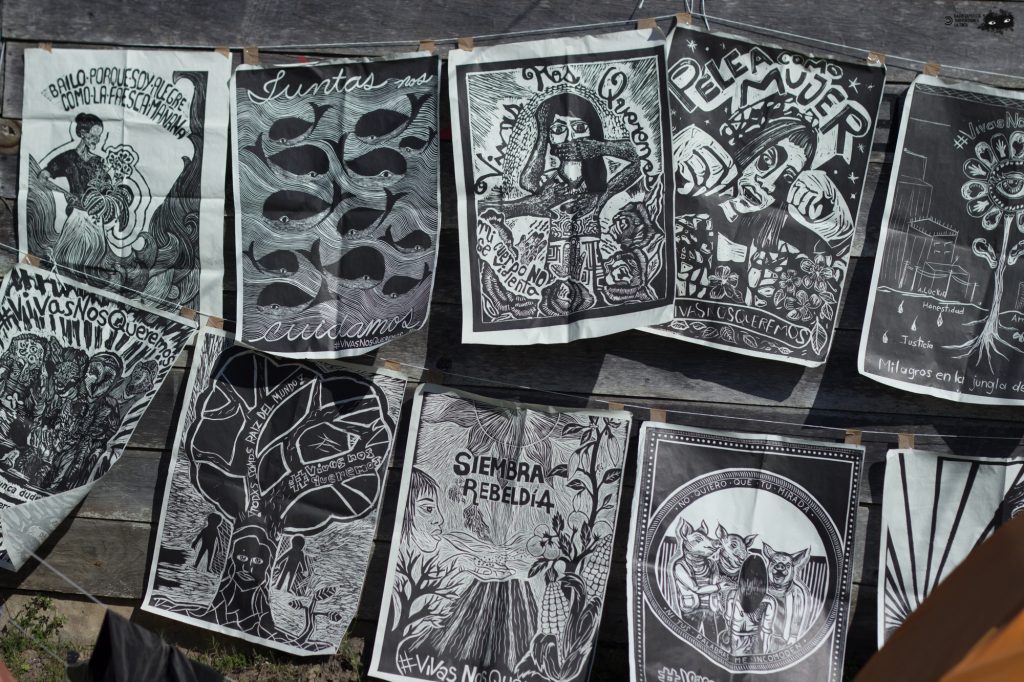
Identidad
Historia
Resistencia
Territorio
Raíz de nuestros saberes
Y una mujer diciendo: “Acá podríamos vivir todas”
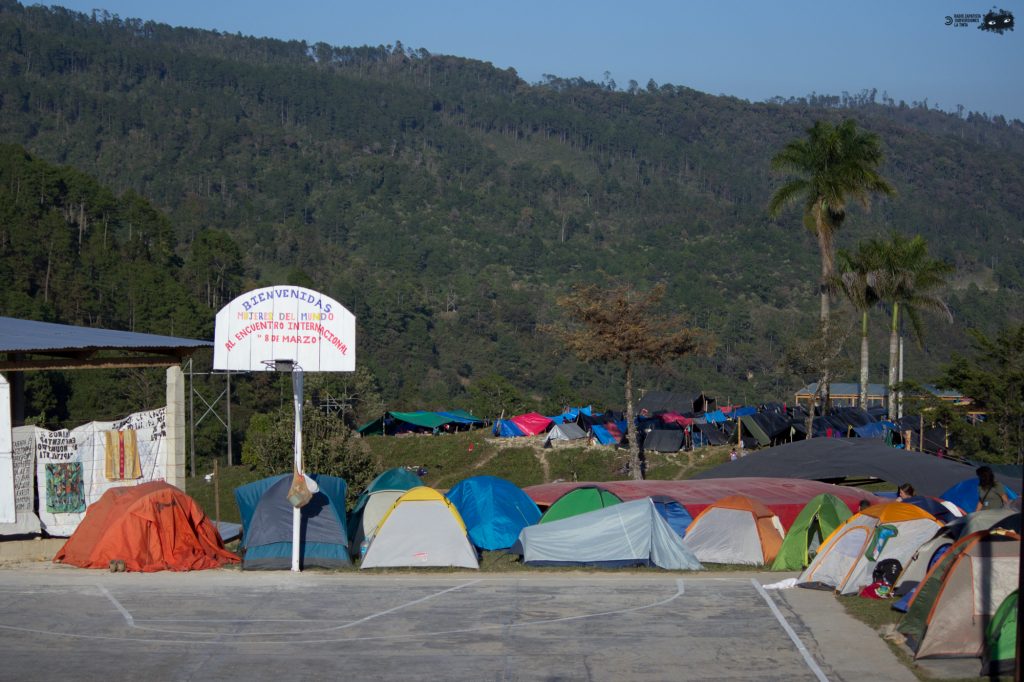
Un sello en la unidad de nuestras rebeldías,
un acuerdo por vivir, y un grito colectivo
“No tenemos miedo”
